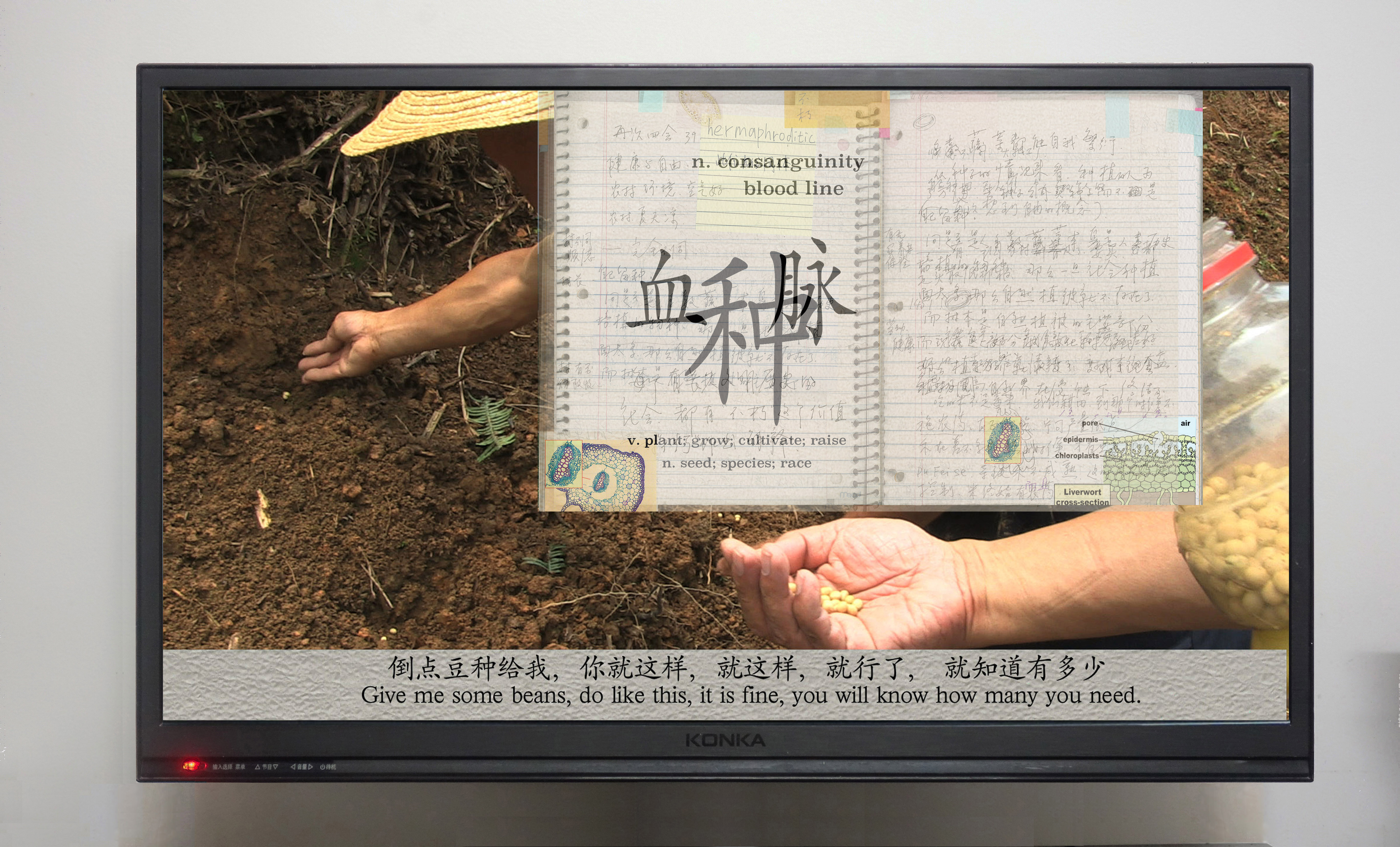 |
|
“Seeds, bloodline, and anxiety about filial piety” Video | 29′8″ | 2014 - 2016 |
 |
|
“Seeds, bloodline, and anxiety about filial piety” Video | 29′8″ | 2014 - 2016 |
Xu Tan was born in Wuhan, China in 1957. He studied oil painting at the Guangzhou Academy of Fine Arts. In 1993, he joined the “Da Wei Xiang” (Big Tail Elephant Group), the Guangzhou-based artist collective. Since 2005, Xu Tan has launched the "Searching for Keywords" project. Based on certain research, he conducted interviews and surveys with specific groups of people, emphasizing the sense of presence and first-hand information, and sorted out and searched out “keywords” that can be used to understand individual experiences and social scenes. Xu Tan used keywords as memories and research methods, through texts, images, and other methods to question, interpret, reset the structure of discourse, and amplify individual narratives, shake the things that are taken for granted and the framework of existing knowledge systems, while linking related theories and social contexts. In the "Keywords School" that began in 2008, Xu Tan tried to exchange keywords with different people to bring out deeper interactions and associations between individuals. The "Keywords Lab" launched in 2011 continued its previous work, focusing on specific topics, promoting multi-party participation, and building a public platform for research. At this stage, the project not only sorted out keywords but also created keywords as research results. "Social Botany" was developed in this context.
The work of "Social Botany" mainly consists of three themes——the relationship between people and the plant world in agricultural farming, the relationship between people and plants in the city (rural) planning and construction, and spontaneous planting by residents of urban communities. It is Xu Tan’s instinct to concern people and plants first——he suffered from asthma when he was a child, so he was extremely sensitive to the surrounding environment, and also because of the artist's curiosity about land policies, natural concepts, planting, and other issues. The sense of the existence of plants in most people's lives may not be as strong as his, but it can also be said to be ubiquitous, becoming a soft interface for opening discussions, communicating emotions, and achieving more complex reflection and analysis. Xu Tan's work attempts to discover the diverse knowledge and understanding of plant existence beyond the practicality of plants, while at the same time implicating people's existence and feelings and their various situations in society. The artist has traveled throughout the cities and villages of Guangdong Shunde, Panyu, Conghua, Guangzhou, Hong Kong (2013), Sihui, Shaoguan (2013-2019), Shenzhen (2014, 2017), Xi'an Lantian (2015), Rotterdam, Leipzig (2014-2015) , San Francisco (2014-2016), Kyoto, United Arab Emirates, Yekaterinburg (2015), Singapore (2016), Yinchuan (2018), Guangzhou (2018-2019) to Guang'an (2019). Each survey lasted for several weeks or months, making the issues reflect the differences in social structure, region, class, ethnicity, and beliefs and other factors of different places. The artist attempted to produce works that include conceptual knowledge, which he called "social knowledge" through social research.
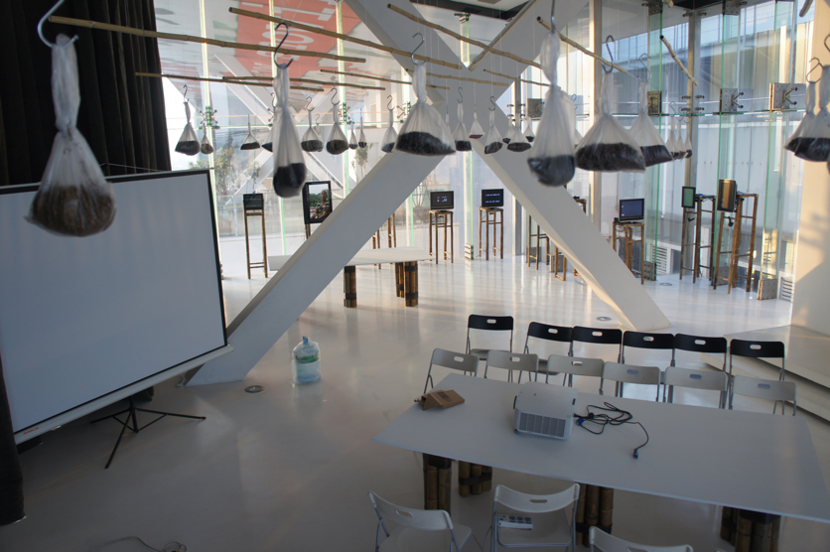 |
|
In early 2014, after the "Social Botany" project was carried out for about a year, Xu Tan made an urban resident planting project at Guangzhou Times Museum. It exhibited videos and installations, invited researchers from the South China Institute of Botany to give eight lecture lessons to the public, and invited relevant professionals to hold lectures and seminars. The museum also organized an open-to-public planting technology workshop and invited an old farmer "Shen Dabo" from Shaxi in Shaoguan and Hong Kong designer Michael Leung to explain various precautions for community and urban planting. |
Videos were used as both a research method and an independent work in the artist's work. The artist recorded the interviews, trying to capture the subtle feelings of the tone and environment in the interview that could not be expressed in words and used these videos as the basic materials for further research and interviews. He continued to return to and edit these videos and brought the phased results of the research back to the research site to stimulate a new round of dialogue, to understand the interviewees’ feelings, and to achieve a deeper understanding of different discourse habits and knowledge structures. The viewers would see the traces of multiple dialogues, the artist’s research, and the interpretation of related documents in the videos. The videos also included the artist’s “visual speaking and writing”—that is, the artist’s thoughts recorded by the camera. Xu Tan tried to explore the possibility of combining research activities with aesthetic activities, and promote comprehensive and cross-domain perception and cognition activities. As a research carrier and medium, language inevitably produces complex interactions with reality.
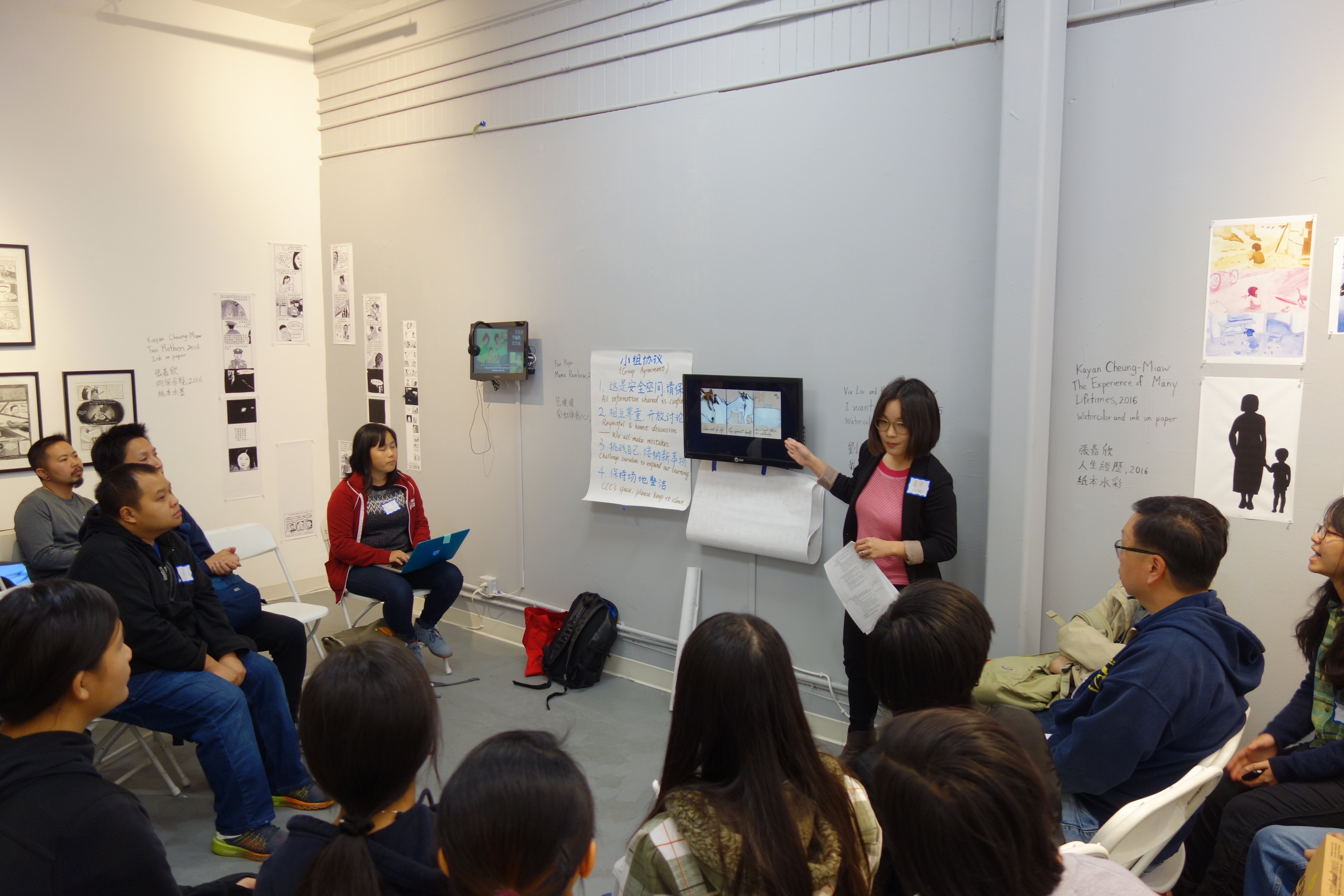 |
|
From November 2015 to March 2016, the artist cooperated with the Chinese Culture Center of San Francisco and visited many local Chinese residents, community workers, social activists, and artists, focusing on the interrelationship between daily perceptions, community practices, cultural traditions, and artistic creation of the Chinese immigrant community. The exhibition not only displayed the files provided by the interviewees and the interviews and analysis by the artist but also allowed the researchers to become intermediaries to initiate dialogues between different subjects so that the audience can learn more about the issues and the process of the project. The interviewees were also invited to hold workshops based on their own practice to reach different audiences. In this project, Xu Tan focused on "amateur artists". In Xu Tan's view, these "artists" generated the concept of artistic creation from their own survival experience, which made them different from professional artists. Xu Tan believes that if art becomes such a universal social activity, there will be a great possibility. |
The artist continued to explore the method of multi-subject collaboration in practice. This was not only a way for the artist to transcend his own perception and consciousness, and to generate artistic cognition and expression in the joint relationship with others, but also to expand collaboration and inspire more individuals to study social issues. For example, in 2013, Xu Tan had an observer with him in each survey, who observed and recorded from different angles and initiated research. Moreover, he believed that art institutions, as collaborators of artists, in addition to supporting the artist’s practice, presenting the staged results of research and creation, and carrying out a series of sharing activities on related topics, they also need to use their relationship with different communities, to assist artists in building a communication platform and mobilize more participants to join. In order to further develop artists' research and return to the public eye. With the deepening of the project, more diversified collaborative practices have shown in research topics, interviewees, interview forms, and presentation methods.
“Two square meters”
“Two square meters”
Video | 11′10″ | 2013 |Acknowledgement: Vitamin Creative Space
Xu Tan described his creative ideas and presented the results of the first land inspection report in the video.
“Two square meters” is a piece of land in Panyu, Guangzhou, located at 113°26'32'' E, 23°01'27'' N. It has a length of 1.43 meters, and a width of 1.39 meters. In 2013, Vitamin Creative Space helped Xu Tan rent this area of about 2 square meters. Xu Tan requested that the appearance of the land should be maintained as much as possible without any human interference. Other activities such as artificial planting and construction should not be carried out. And it will be tested for soil composition every five years, for a hundred years, until 2113. Xu Tan hoped to observe the relationship between humans and nature.
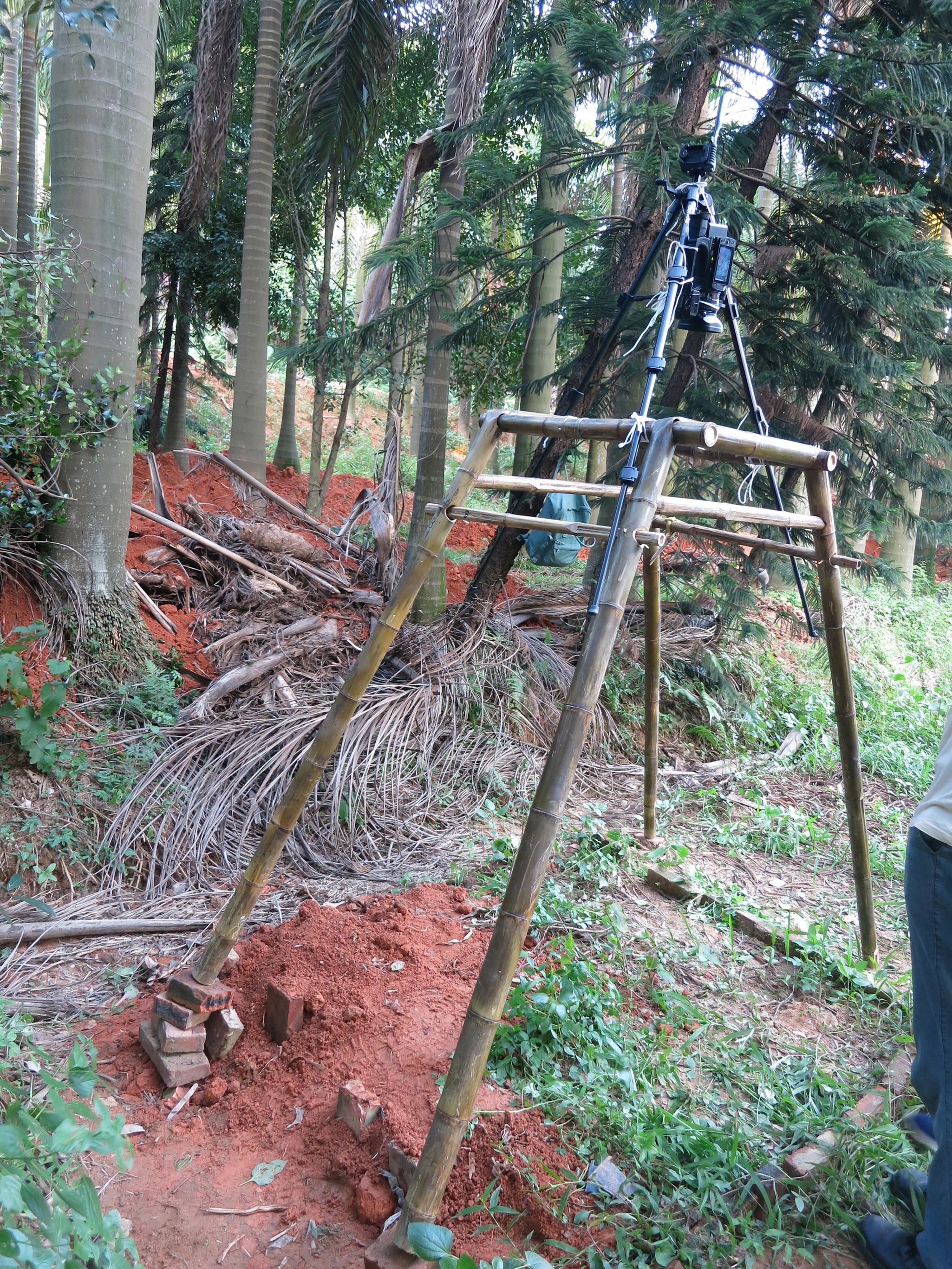 |
|
“Two Square Meters” Xu Tan put the camera on a special bamboo stand to take pictures of the land. |
In August 2013, Xu Tan asked the inspection company to do the first analysis and inspection of the land. After finishing the test, the inspection company said that there was a serious problem, but did not specify what it was, only said that it needed to be tested again. Two weeks later, they said that the new result showed that the item that was previously found to be seriously exceeding the standard was normal, which made Xu Tan very suspicious.
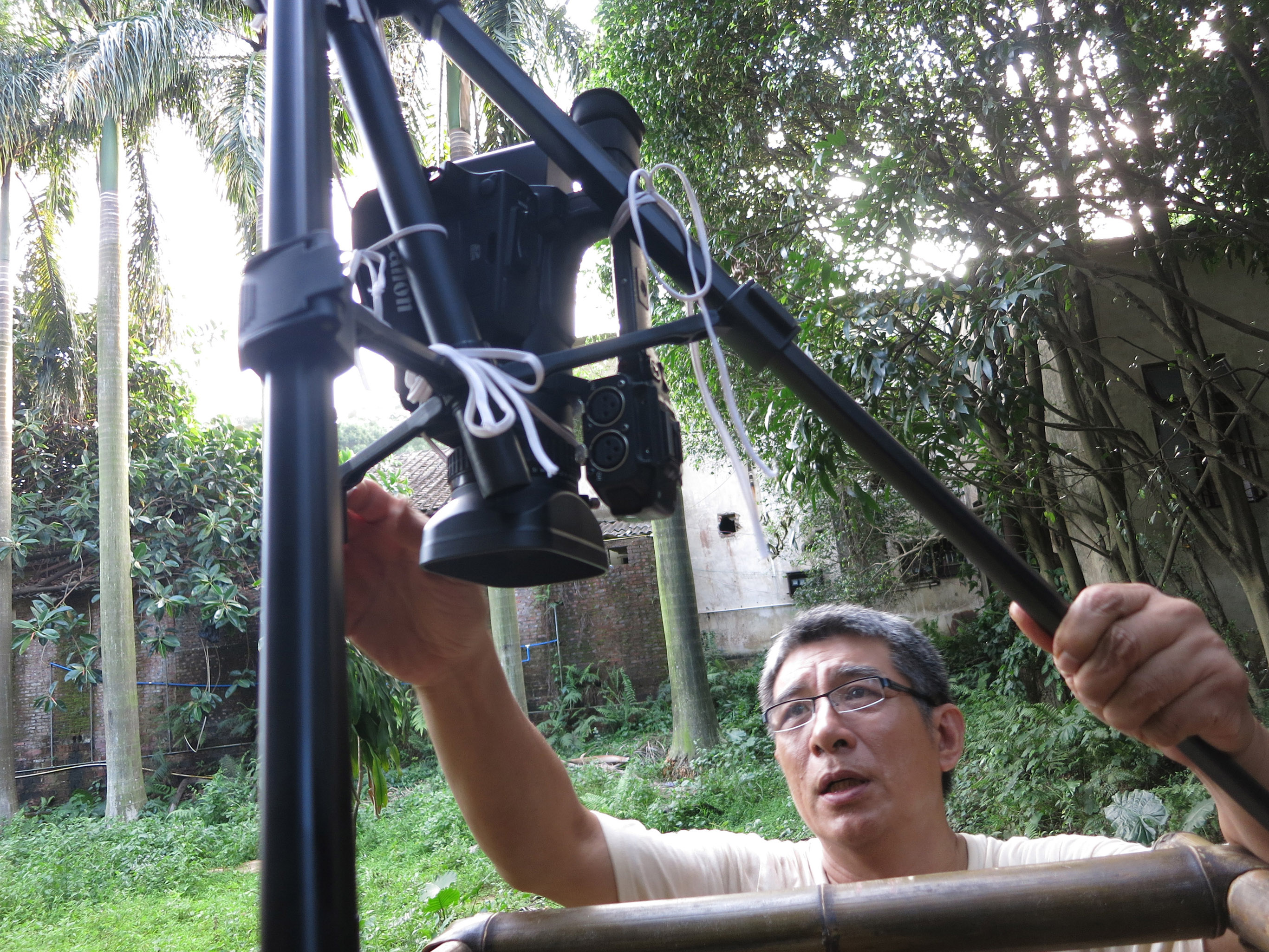 |
|
“Two Square Meters” Xu Tan is adjusting the camera. |
The Vitamin Creative Space team found that the "two square meters" land was covered by the soil from the digging pond, and was later crushed by a bulldozer. The team members then tried to restore the land as it was before, used such "social actions" to trace the history of the land. Xu Tan believed that this land became a model for testing time and history, including his "wish" to respect this piece of land and his "appeal" as an action, a "historical" perspective, and "uncertainty".
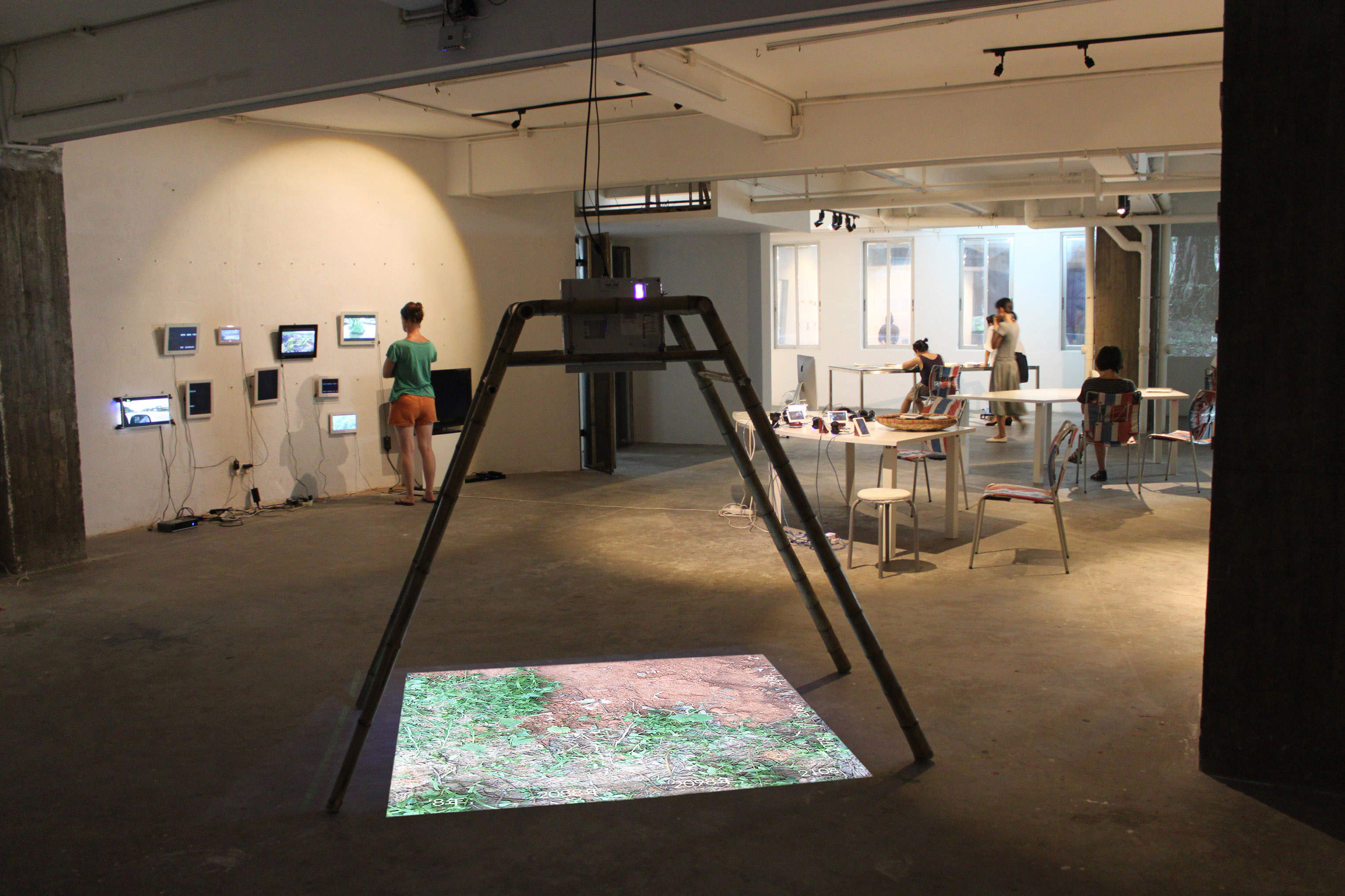 |
|
“Two Square Meters” The picture shows the video of "Two Square Meters" presented in the exhibition "Questions, Soil and ‘Socio-Botanic’" at Vitamin Creative Space from August to November 2013. The exhibition also displayed the staged results of the artist's investigation of land use and management, planting, and diet in many parts of the Pearl River Delta in the summer of 2013. The artist conducted more than 20 interviews in total, interviewees included farmers, retired cadres in the countryside, nursery owners and staff, owners of the gardening business, retired Gardening Bureau leaders, managers in garden design, housewives engaged in planting, artists in farming, and owners of private farms, and so on. |
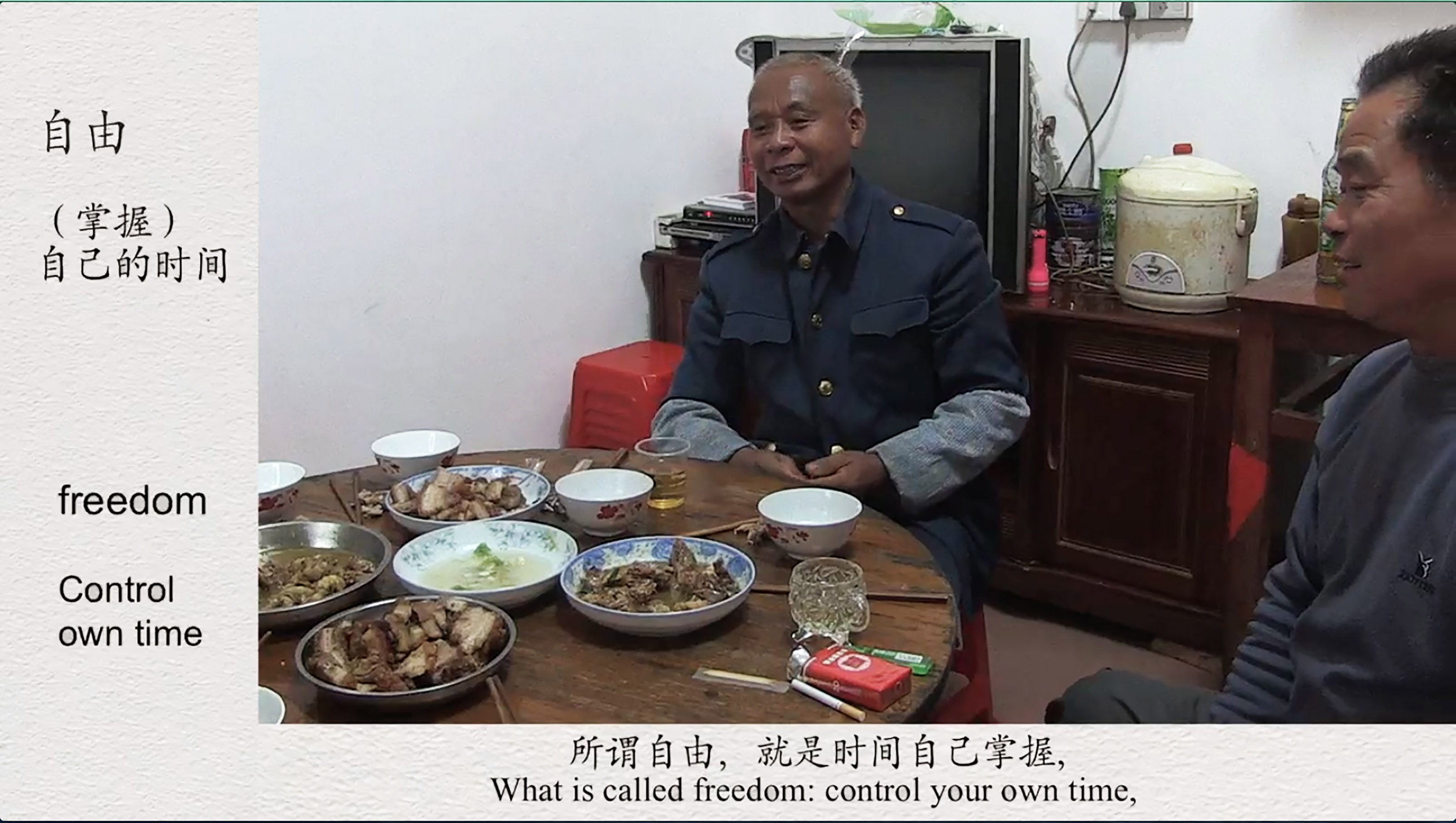 |
|
“Endurance-Animalistic freedom” Video | 31′3″ | 2014-2016 |
 |
|
“Endurance-Animalistic freedom” Video | 38′38″ | 2014-2016 |
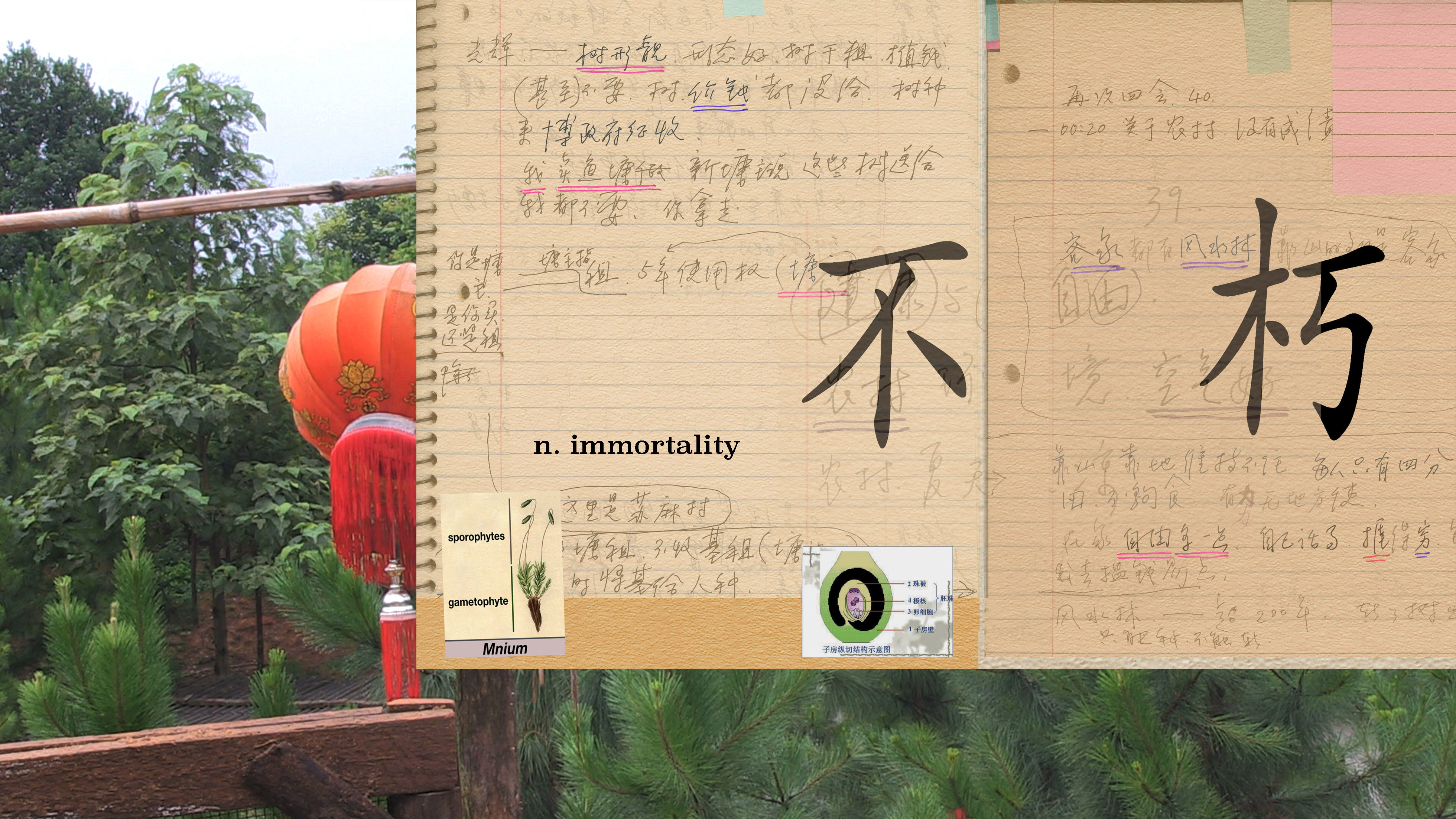 |
|
“Seeds, bloodline, and anxiety about filial piety” Video | 29′8″ | 2014 - 2016 |
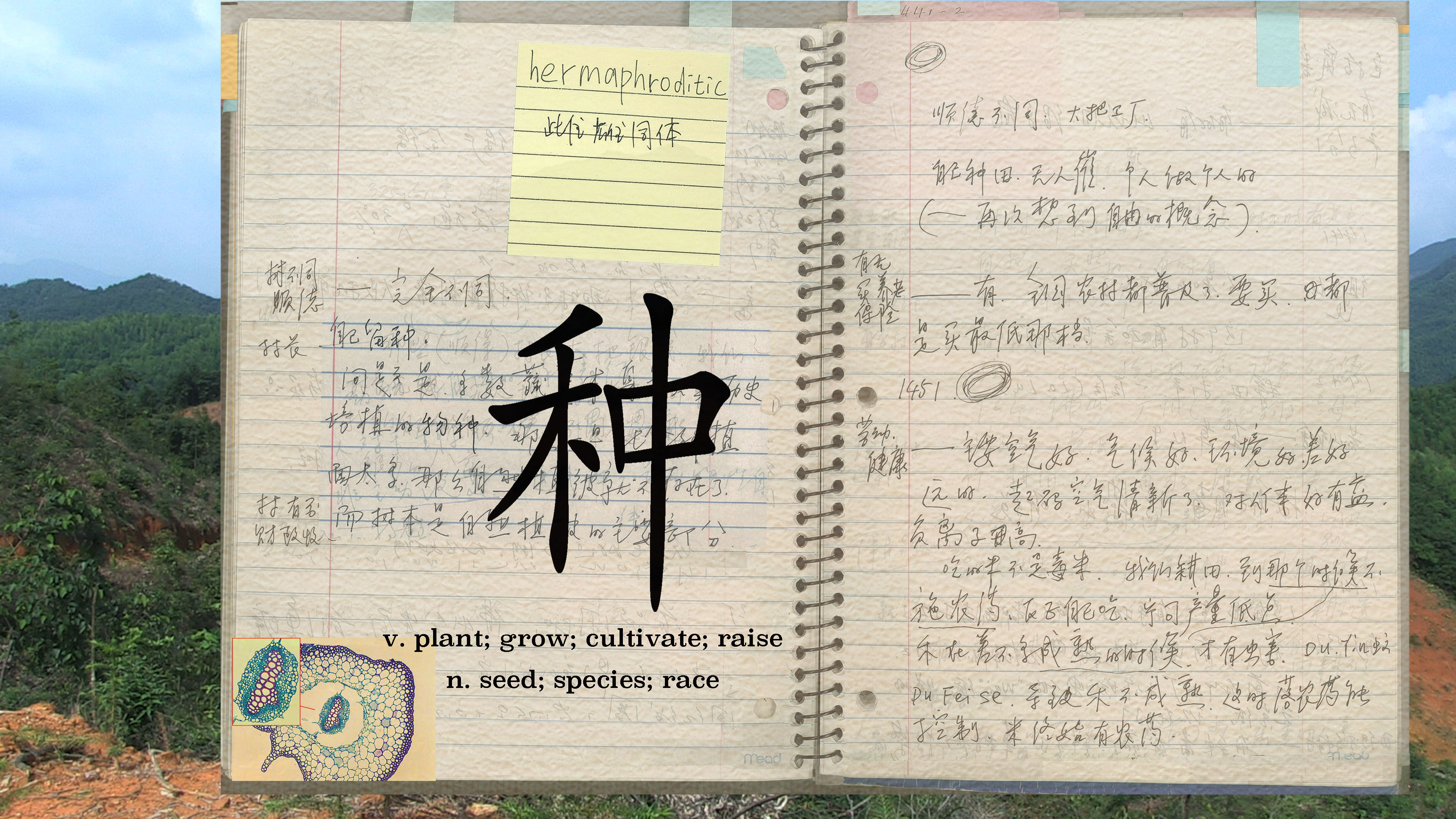 |
|
“Seeds, bloodline, and anxiety about filial piety” Video | 29′8″ | 2014 - 2016 |
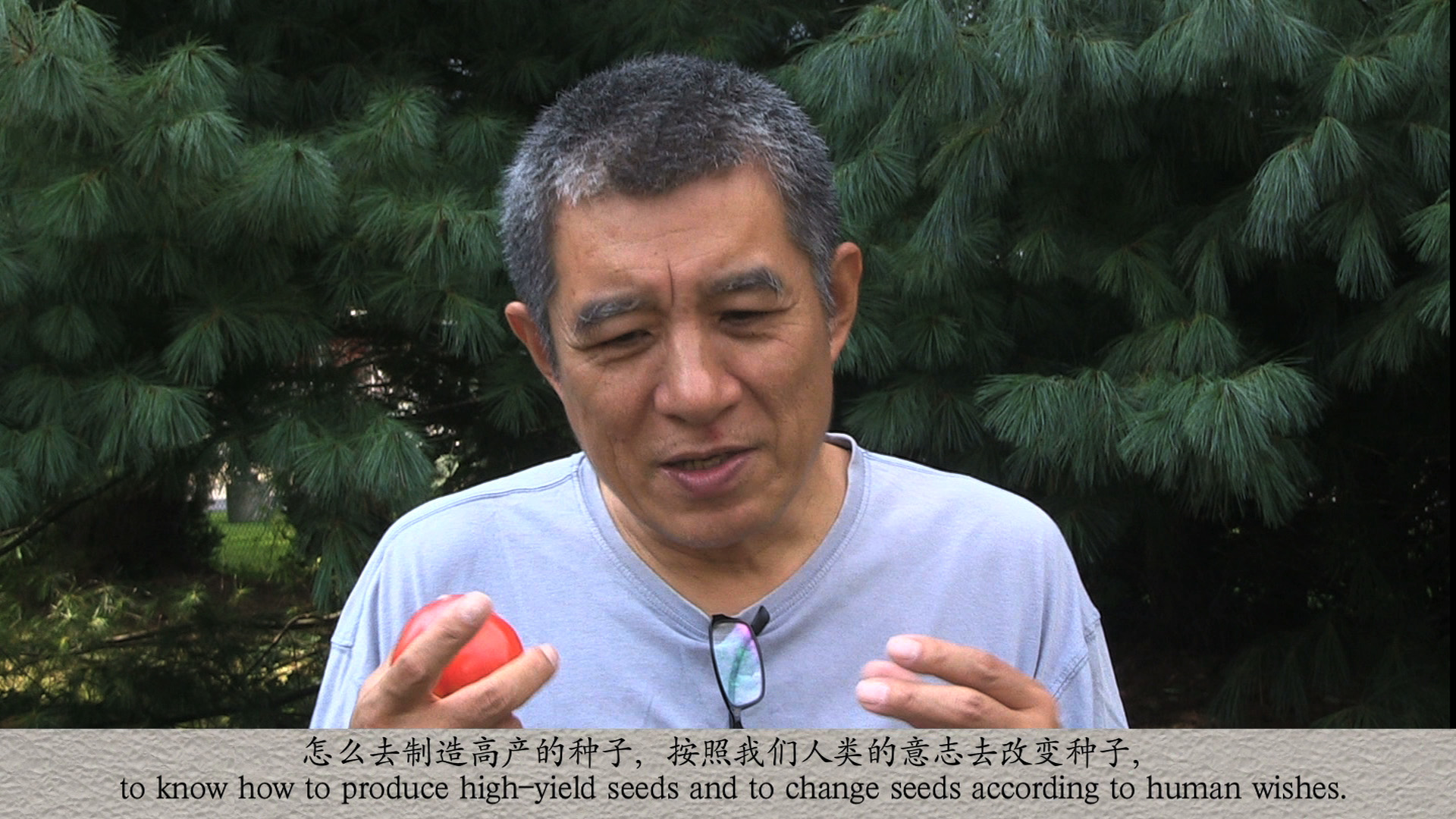 |
|
“Seeds, bloodline, and anxiety about filial piety” Video | 25′27″ | 2014 - 2016 |
Tan (疍) people live on the water and utilize small islands floating on the water as their farming land. Sugarcane is one of the crops. During the years of Tanka's (Tan families) research, Xu Tan has been considering issues related to the right to use natural resources and discussing issues such as water planting and the distribution of social production information with the "water people" of the Tan people in Lijiao, Guangzhou. In 2018, he asked: does "national ownership" ever exist in human history?
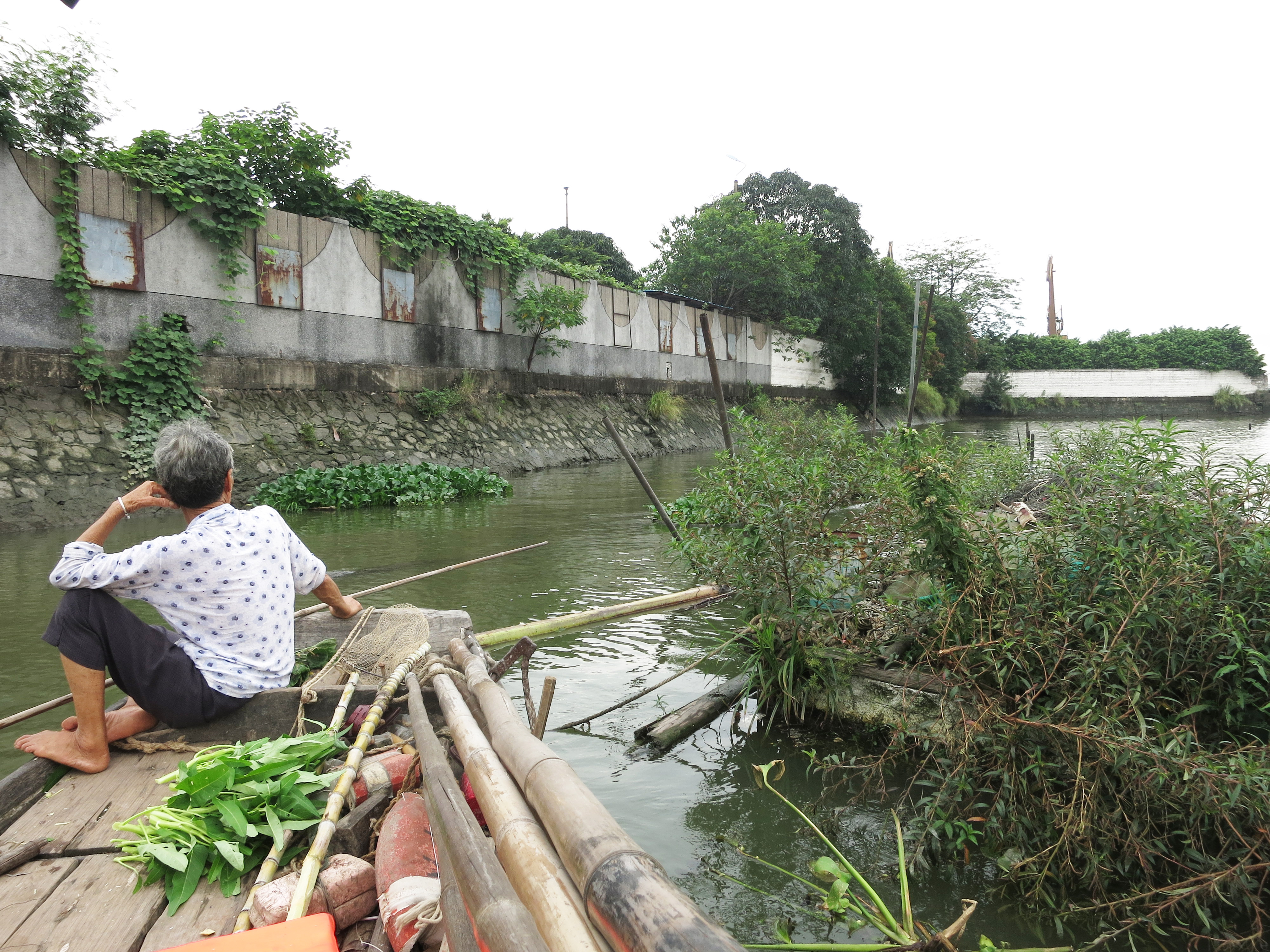 |
|
"Keywords Lab—Water, Land, and Turf" Video | 105′ | 2014 - 2018 |
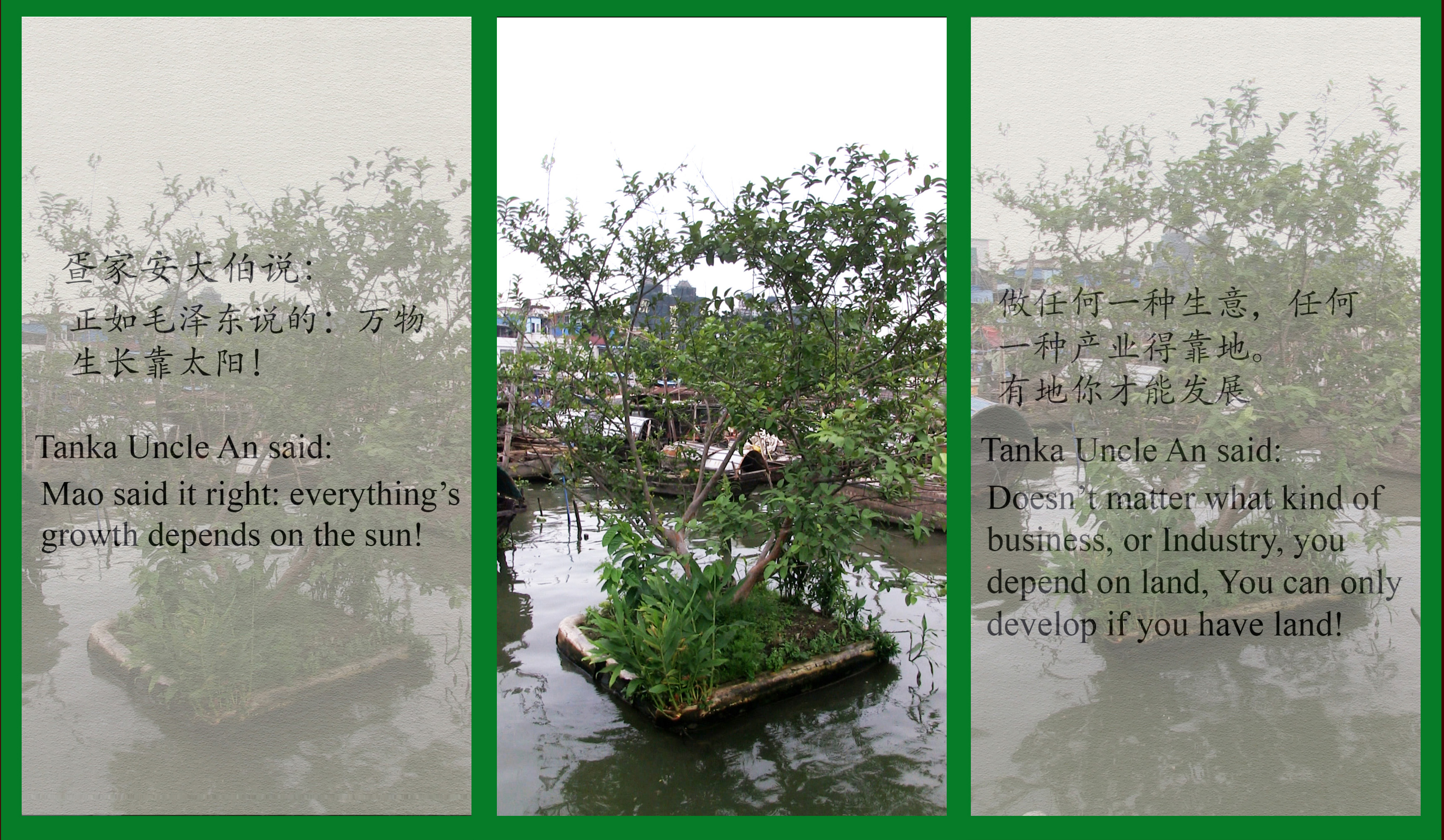 |
|
"Keywords Lab—Water, Land, and Turf" Video | 105′ | 2014 - 2018 |
 |
|
"Keywords Lab—Water, Land, and Turf" Video | 105′ | 2014 - 2018 |
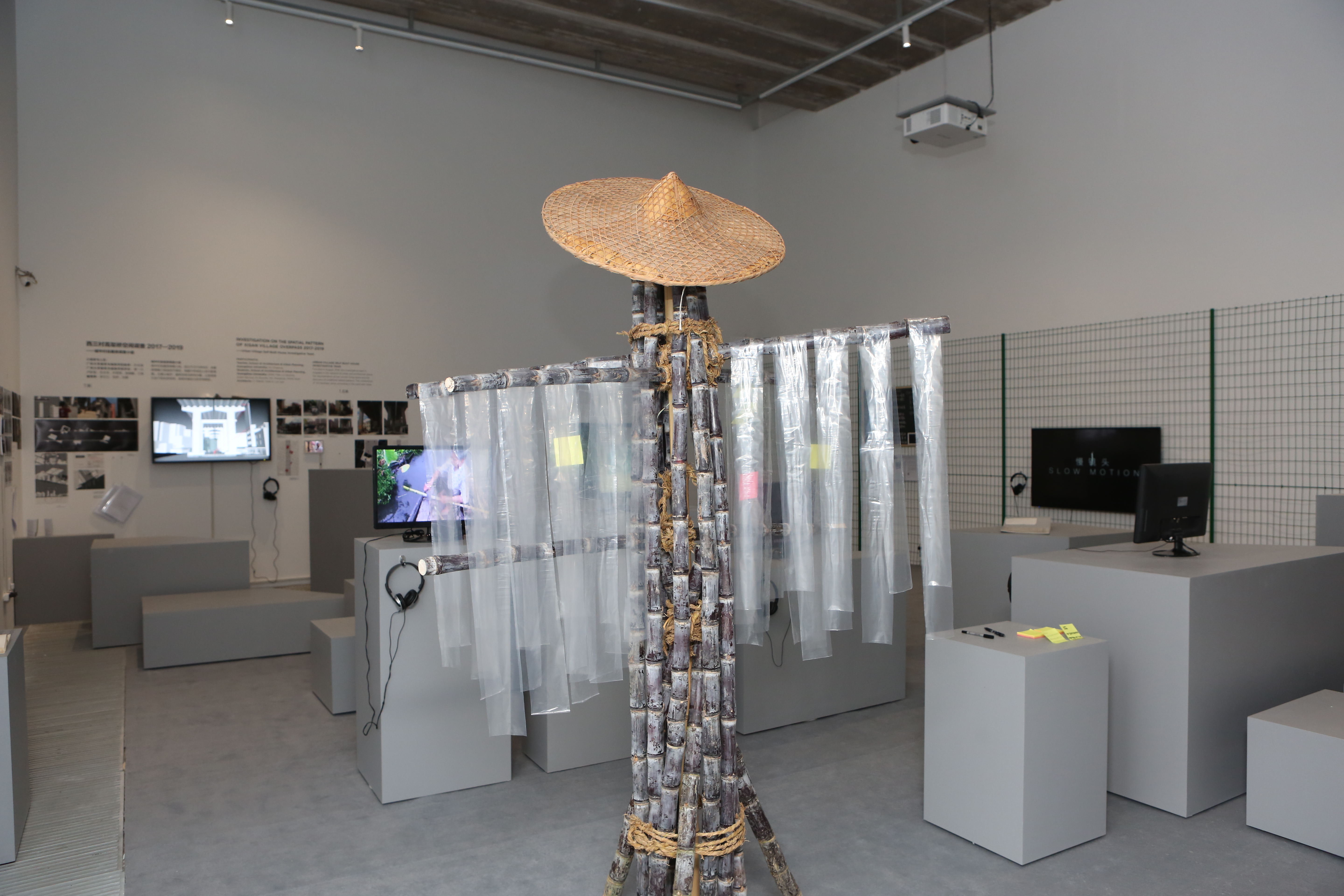 |
|
"Keywords Lab—Water, Land, and Turf" In 2019 Taikang Space "A Geography of Resistance" exhibition, "Keyword Lab—Water, Land, and Turf" exhibited an artwork with five videos, dialogue notes, and a sugarcane installation. In different exhibition sites, the artist tried to integrate into the local social life, and the display of the research process itself was the key. |
"The Road of Nonglin, The Hill of Zhusi" (Nong means farming, Lin means forest, Zhu means bamboo, Si means silk in Chinese) was initiated by Xu Tan in cooperation with the FEI ARTS in Zhusigang Community, Guangzhou. The project started in April 2018 and lasted more than a year in total.
FEI ARTS was formerly "Fei Gallery", which was established in 2006 and was renamed in 2017. It has explored interactions with surrounding communities and carried out art activities to establish connections with residents. At the beginning of 2018, FEI ARTS invited Xu Tan to do a solo exhibition at the art museum. After a series of visits and talks, Xu Tan decided to transform the solo exhibition project into a cooperation project. Xu Tan became the initiator of the project with participants from all sectors: teachers and students majoring in agriculture and gardening, community residents, retired employees, community workers, company employees, and other people who continue to plant in the city. All participants were not professional artists.
Xu Tan and FEI ARTS jointly established a plant working group with college students majoring in landscape architecture from South China University of Technology and Guangdong University of Technology as the main body, and initiated community planting and oral history records, workshops, and other activities with individuals interested in planting-related issues and practices in the community. In addition to continuing his previous research in the project, Xu Tan also explored the relationship between urban planting, individual life, and plants, and also served as a mentor, inspiring team members to put forward their ideas and assisting the team in developing the project.
On the one hand, the staff of the art museum assisted the plant working group. On the other hand, they recorded the process of the project using video, photography, and text. In September 2019, they showed the phased results of the project at the museum. The following is an introduction to some of the sub-projects.
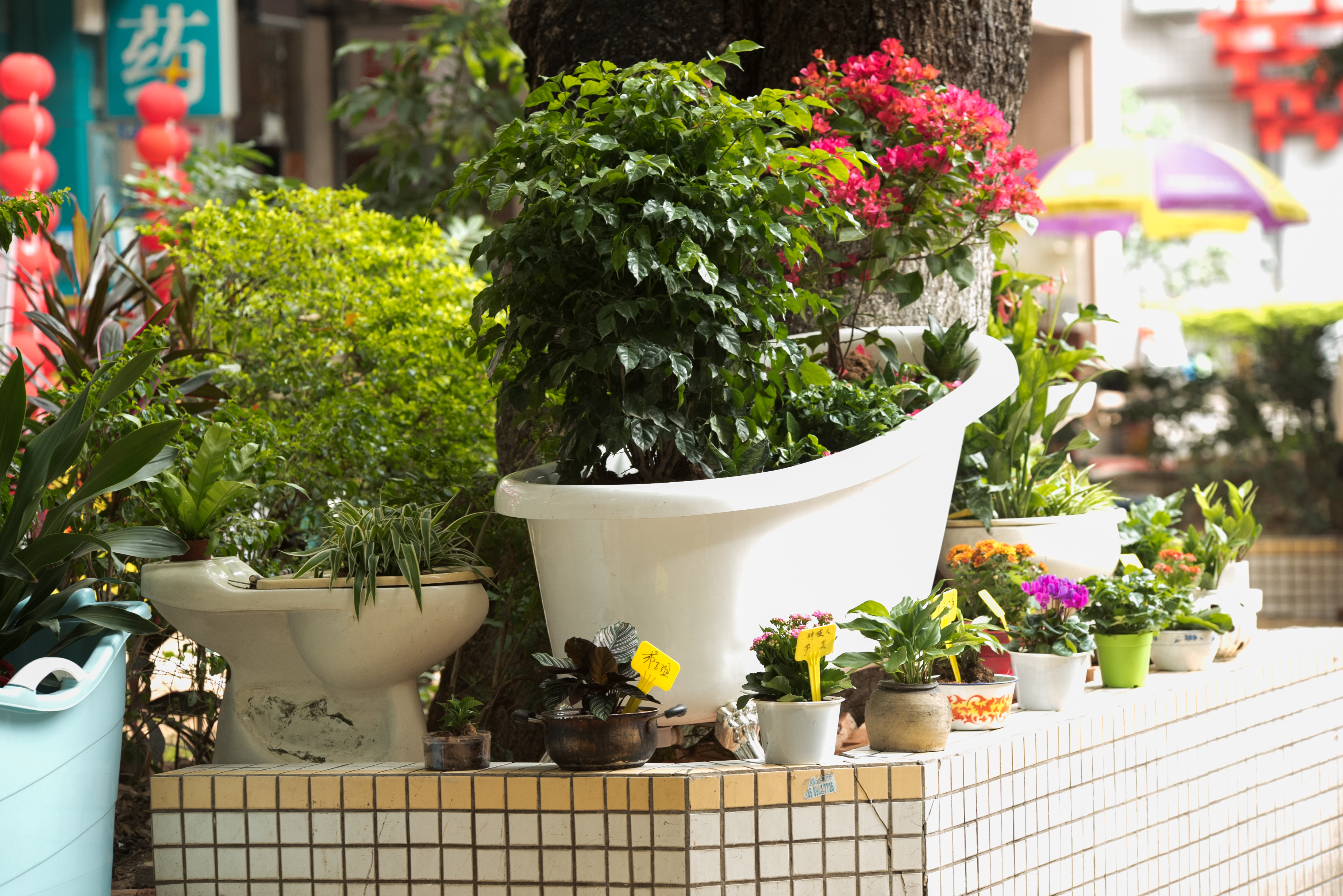 |
|
“The Road of Nonglin, The Hill of Zhusi” Among the works carried out by the project, "People's Garden" and "New People's Garden" are the most widely participated and have strong continuity. The "People's Garden" (December 1, 2018 to June 27, 2019) was built on an open space at the ground of the Longzhu (literally means dragon ball in Chinese) Building, Zhusigang. It was "planted" by the plant working group, museum staff, volunteers, and residents who collected old containers. Most of the time, it was maintained by volunteers from the family comprehensive service center and enthusiastic residents. The "Sisters Planting" group (or the eight sisters) were the most enthusiastic participants in planting and maintenance. |
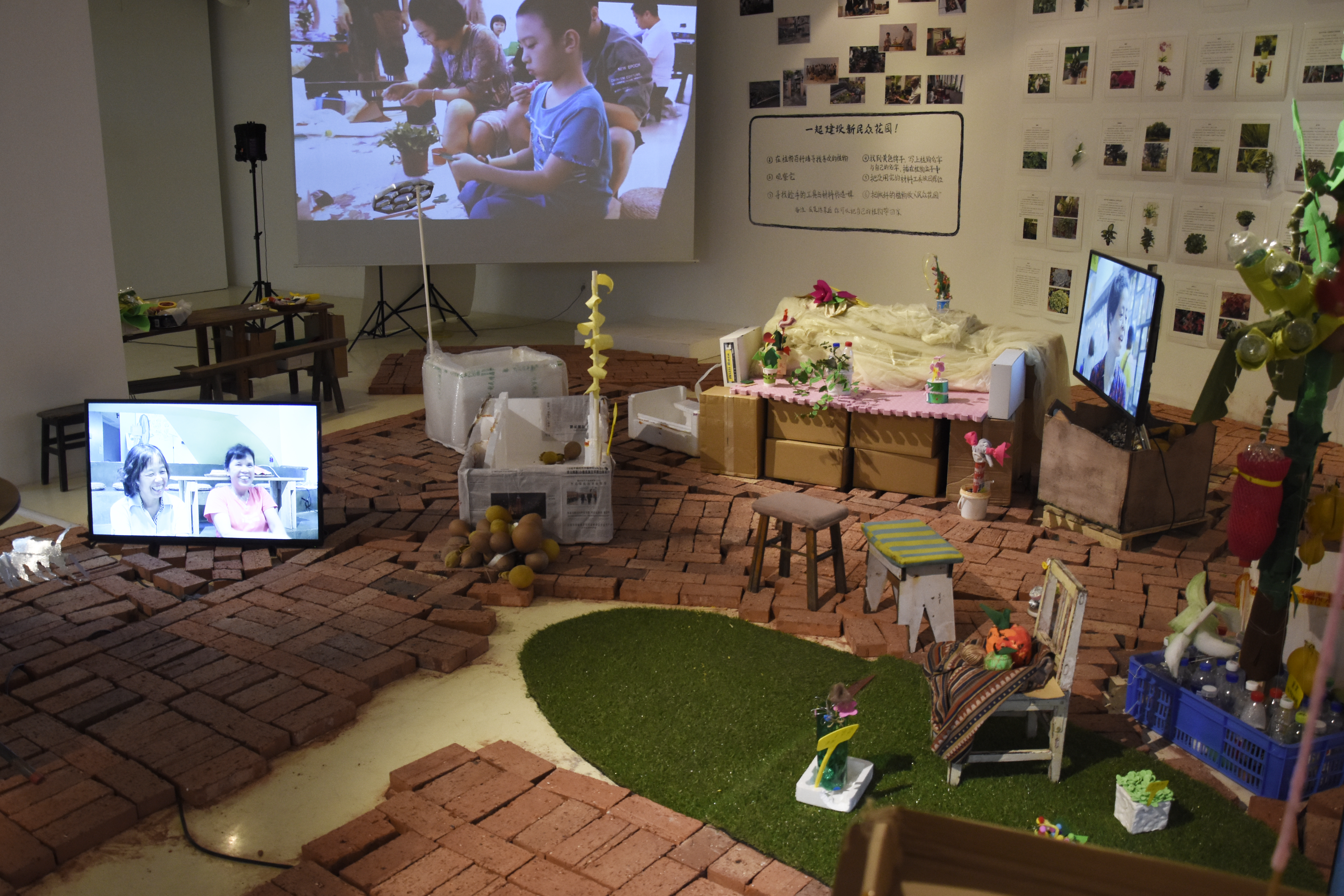 |
|
“The Road of Nonglin, The Hill of Zhusi” A few months after the garden was opened, some residents complained that the garden attracted mosquitoes and rats, news from the neighborhood committee that the garden might be razed. To keep the garden, the participating residents repeatedly expressed their opinions to the neighborhood committee. In the end, the garden was razed, the reason was to prevent dengue fever. Participants expressed their sorry and found it difficult to accept. Residents proposed that the “People’s Garden” could be reproduced with hand-crafted plants, so teachers, students, and volunteers from South China Agricultural University majoring in botany jointly instructed the residents of Zhusigang and the public to make hand-made plants, to "restore" the plants that were removed. These plants were exhibited in the art museum for "New People's Garden". In the eyes of some residents, these plants have continued to grow in this form. In Xu Tan’s view, how to plant, how to negotiate the use of space with residents and neighborhood committees with different opinions, and how to self-organize activities can reflect the inner conditions of participants. These observations and experiences cannot be directly told by concepts such as "participation" and "resistance", but "their consciousness of continuing the garden is a kind of gentle resistance." |
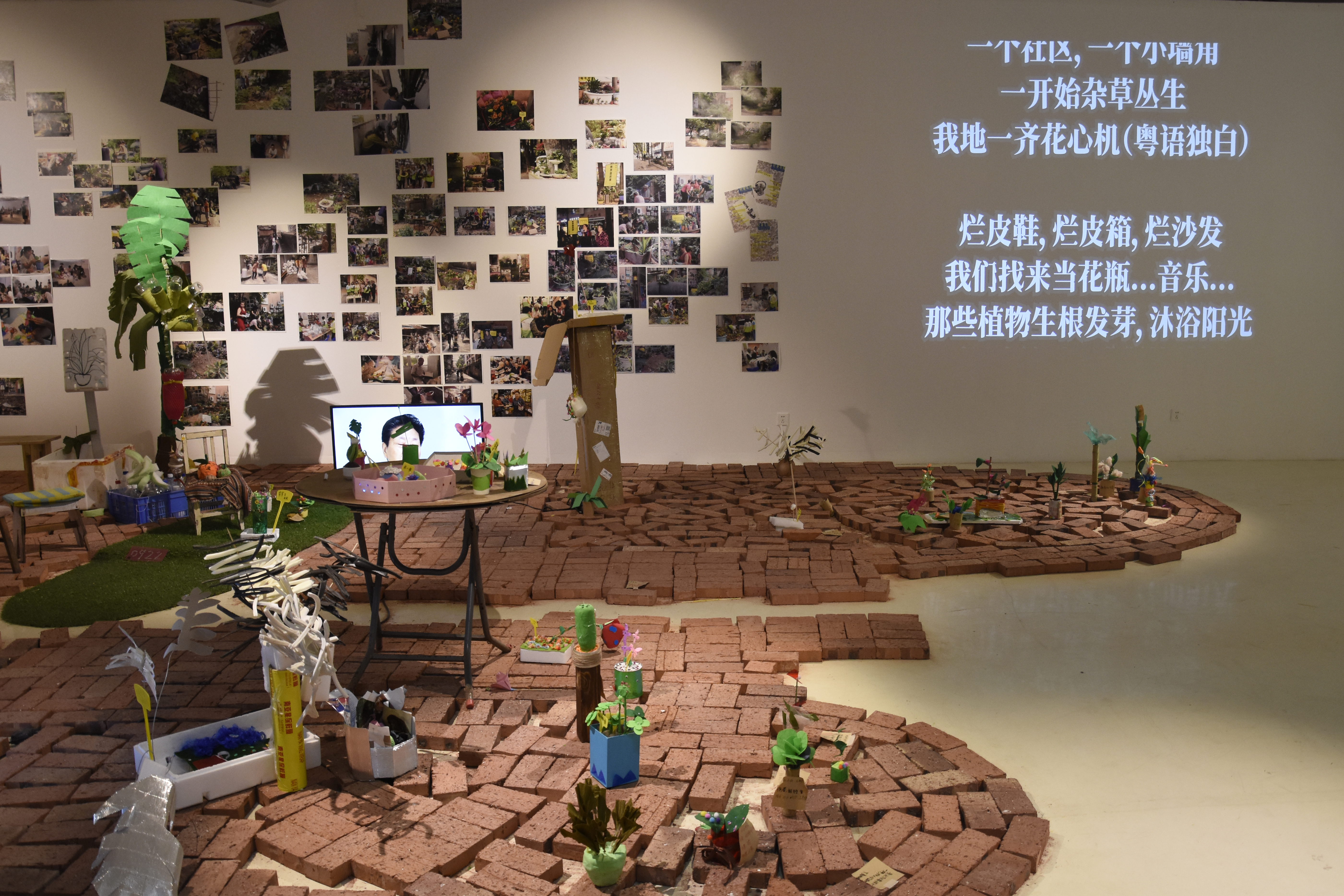 |
|
“The Road of Nonglin, The Hill of Zhusi” This exhibition also displayed videos and photos of the various stages of the People's Garden, and the research results about the plants in the garden. Cai Suo and Liu Hao of the Xisan Vocal Group and the shakuhachi performers composed a song for the People’s Garden and sang it in the New People’s Garden. Visitors of the exhibition can create hand-made plants and put them in the New People’s Garden. Creators hoped to continue the ideal of "creating a connection between residents" in the New People’s Garden. |
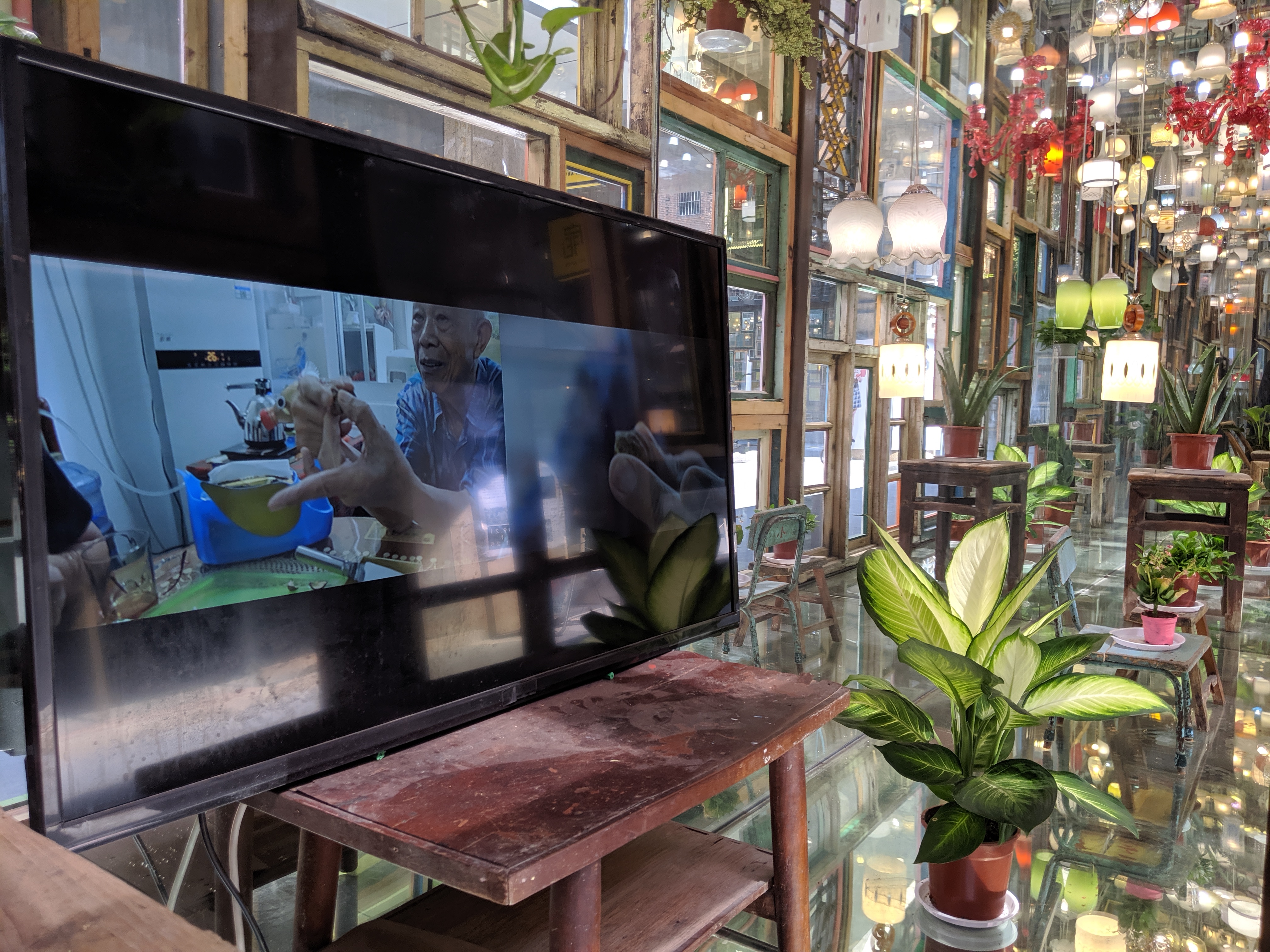 |
|
“The Road of Nonglin, The Hill of Zhusi” Uncle Xu, an Indonesian Chinese resident of the Zhusigang community, likes to make handmade flower pots and participated in the "People Garden" project initiated by the FEI ARTS. He was about to move, hoping to keep the plants in the museum, and thus the "plant welfare house" was born: encouraging more people interested in plants/planting to put plants in the museum for everyone to enjoy, exchanging planting knowledge, or sharing memories and stories related to plants. |
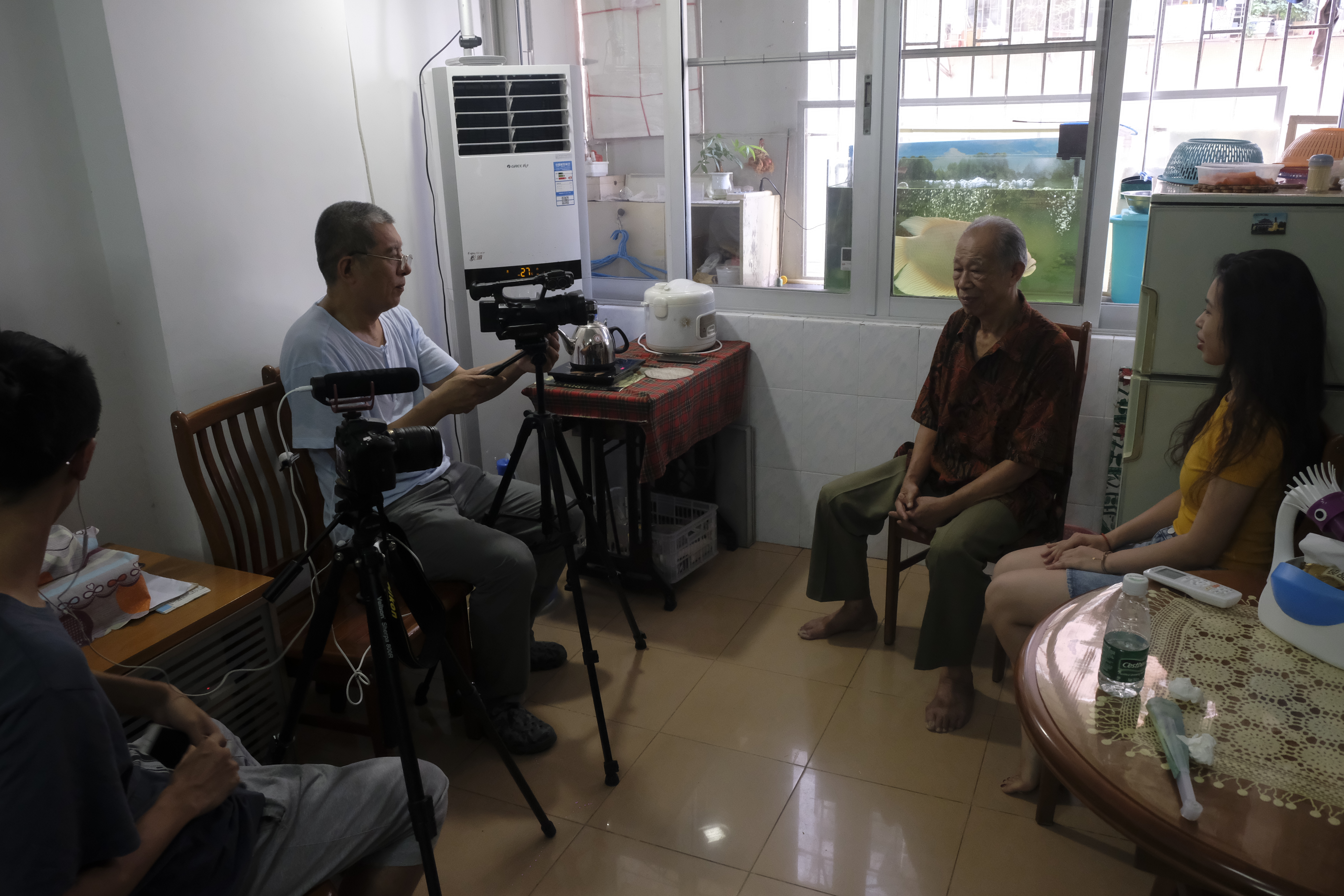 |
|
“The Road of Nonglin, The Hill of Zhusi” Xu Tan is interviewing Uncle Xu (Acknowledgement: FEI ARTS) |
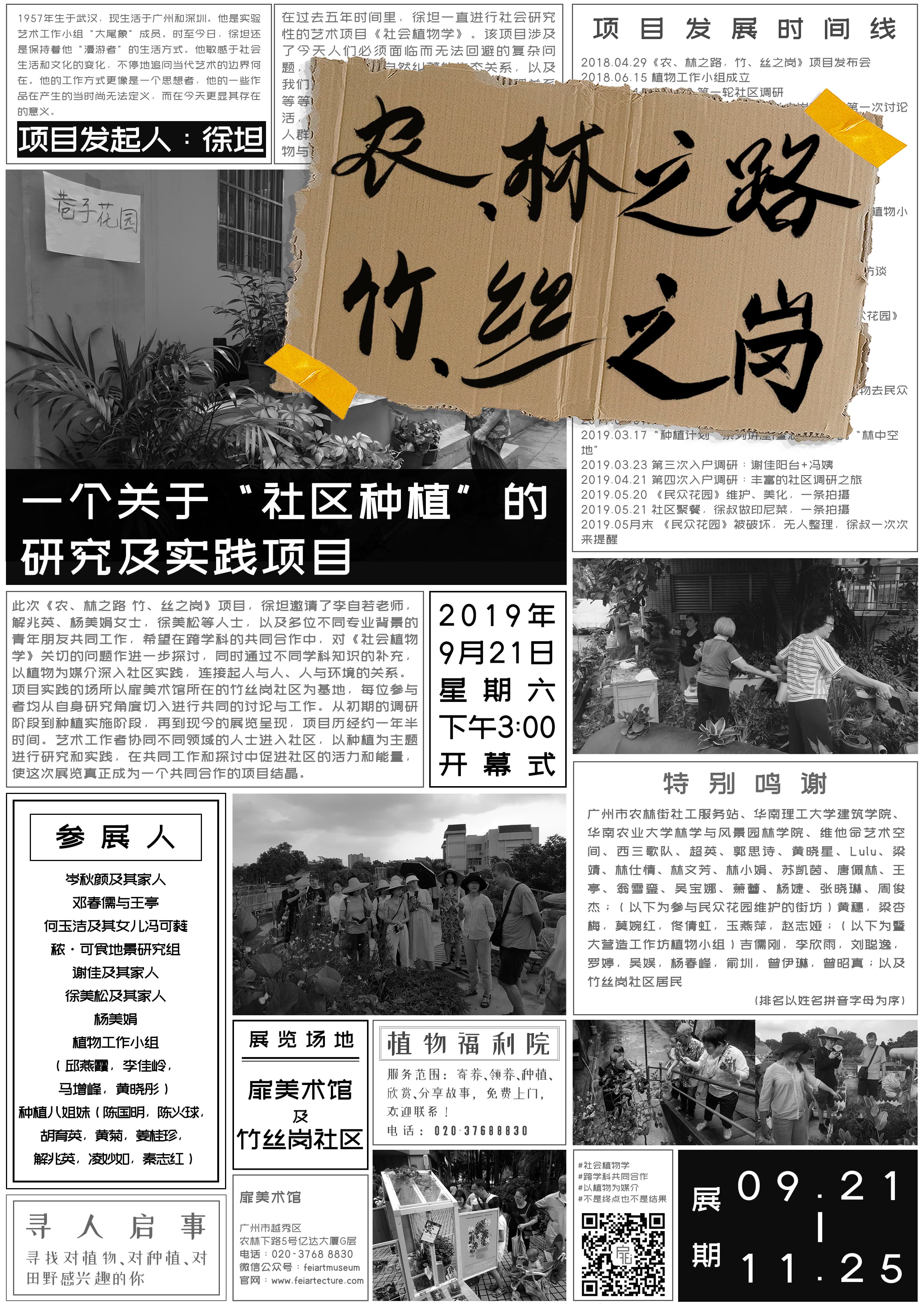 |
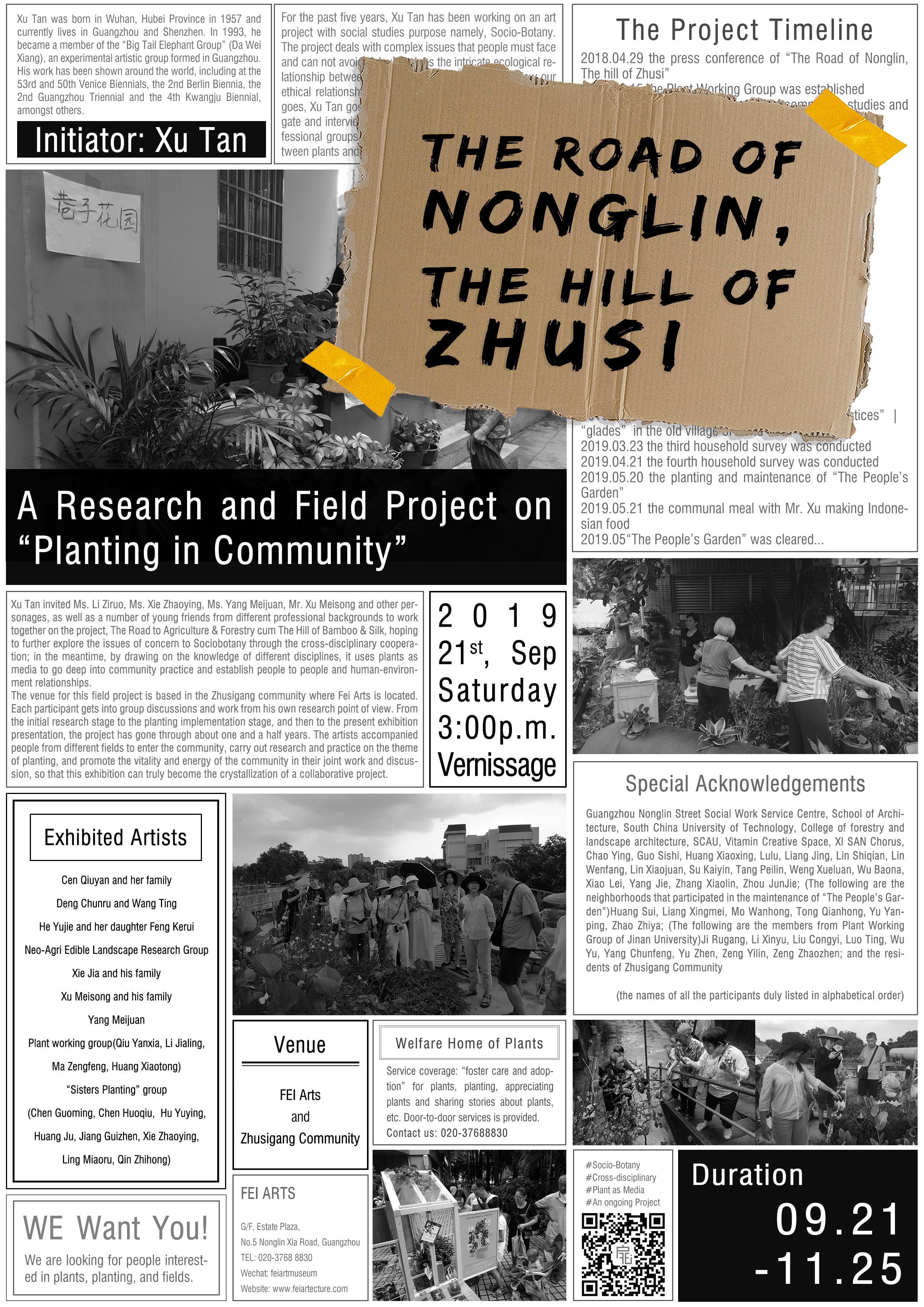 |
|
“The Road of Nonglin, The Hill of Zhusi” Chinese and English Posters (Acknowledgement: FEI ARTS) |
In 2015 and 2016, the artist conducted research and interviews with some people in East Asia on the issue of the relationship between humans and the so-called nature: "I realized that there is a special situation in the cultural background of East Asia... The mixture of traditional civilization and contemporary culture becomes a kind of belief, and this mixed consciousness describes the relationship between humans and the natural world, showing a particularity and similarity."
Based on the interviews, the artist further explored the topics involved in the research and presented the final result in the form of videos. There are seven screens in the videos, mainly showing the artist's interviews with four interviewees from Guangdong, Kyoto, Singapore, and San Francisco.
One of the screens, "Who was talking to my mother, when she was in the forest'' presents the artist's 2015 surveys and interviews with a family living in Daao Village, Shigou Town, Sihui County, Zhaoqing, Guangdong. The interviewee was Mr. Weng . He mentioned that his mother disappeared in the mountains behind the village one morning. Nearly a hundred people in the village looked for her for a day but in vain. His mother came back the next day. From the artist's point of view, Mr. Weng's narration fully embodied the relationship between humans and the environment, spirit, and local religion.
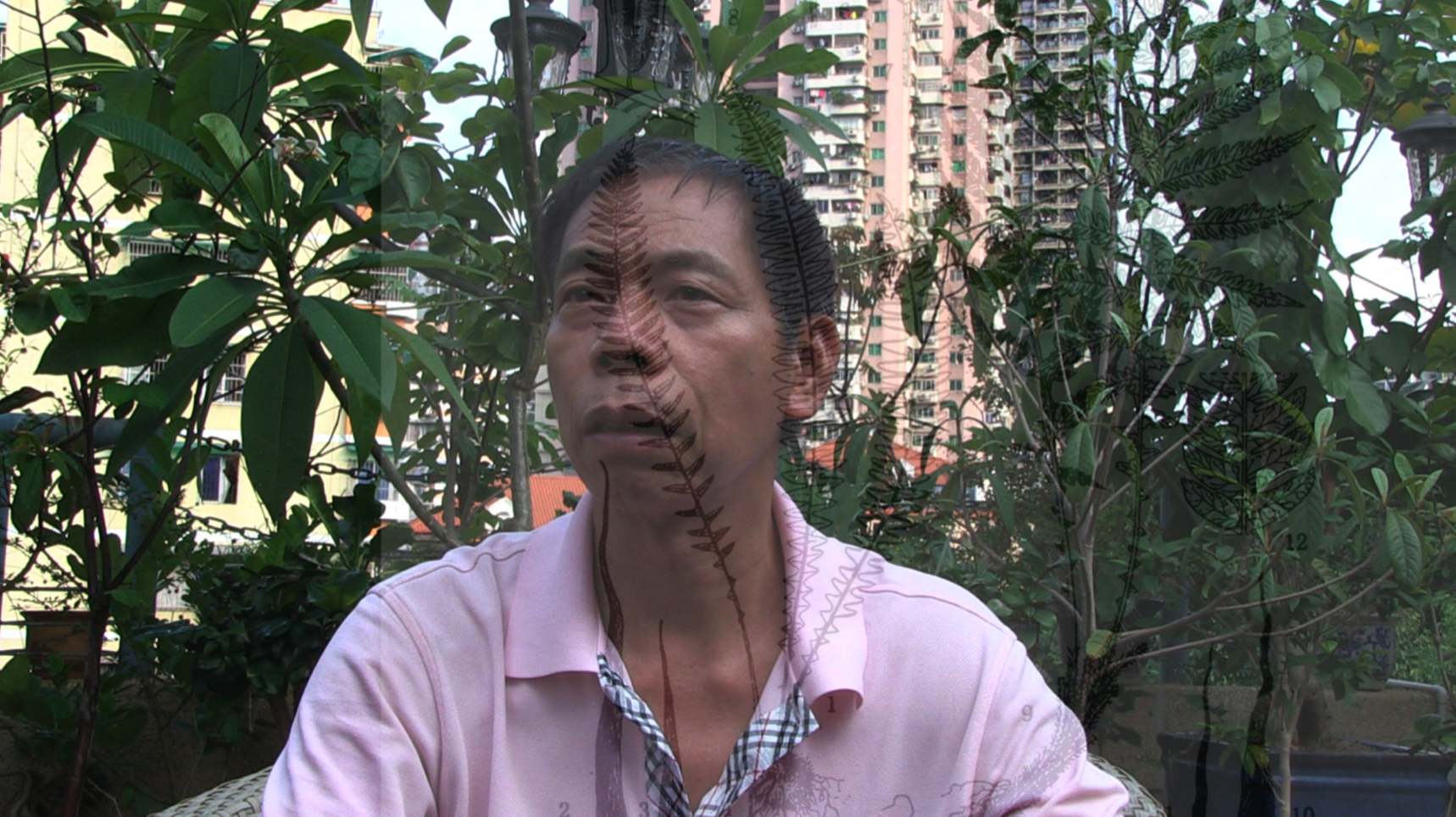 |
|
“Who was talking to my mother, when she was in the forest?” Video | 31′44″ | 2015 | Acknowledgement: Vitamin Creative Space |
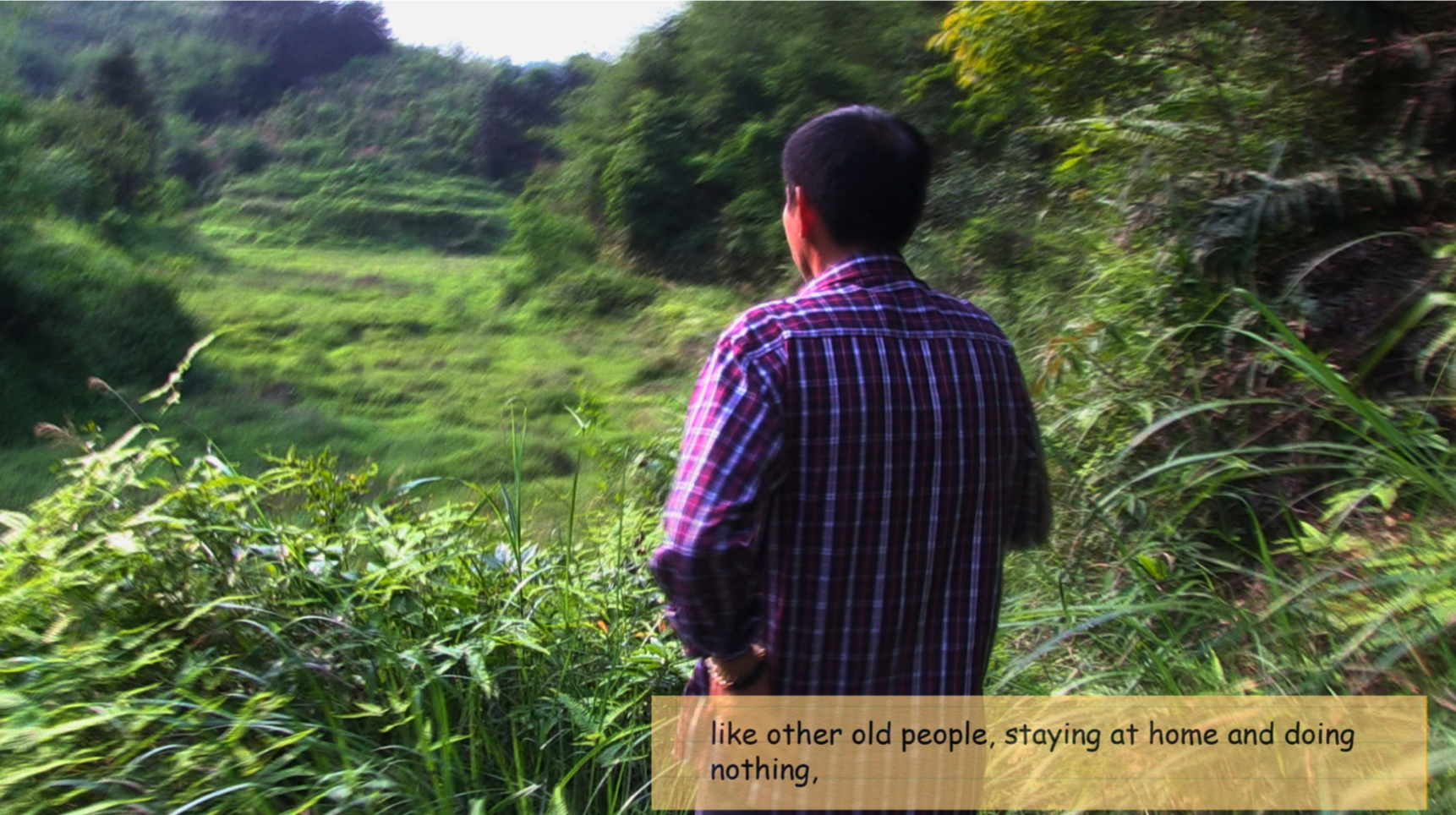 |
|
“Who was talking to my mother, when she was in the forest?”” Video | 31′44″ | 2015 | Acknowledgement: Vitamin Creative Space |
 |
|
“Who was talking to my mother, when she was in the forest?” Video | 31′44″ | 2015 | Acknowledgement: Vitamin Creative Space |
"Seeds and Leaves 1" and "Seeds and Leaves 2" present an interview and related research conducted by the artist with Shigemo Matsutani, the former director of the botanical garden at the Kyoto Botanical Garden in the spring of 2015. The director talked about the close connection between Japanese garden culture and religion, and the difference between Japanese gardens and European gardens. As a scientist, he worships life and believes in the energy of gods and spirits. He narrated that he had experienced telepathy with plants (in the interview he talked about his three experiences of talking with plants). He also talked about how humans will face the destruction of the environment in the future and believes in the importance of science for environmental protection.
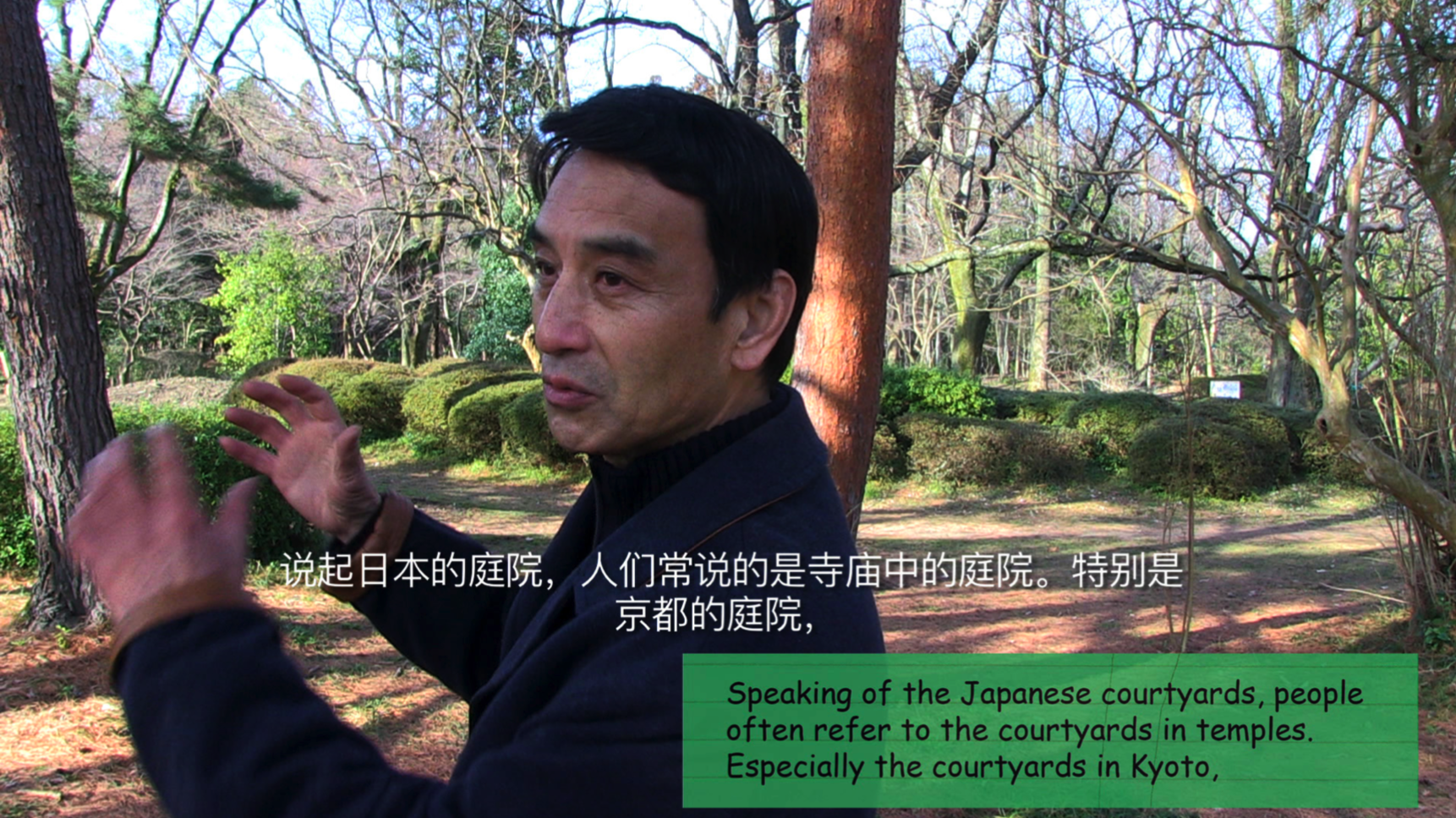 |
|
“Who was talking to my mother, when she was in the forest?” Video | 31′44″ | 2015 | Acknowledgement: Vitamin Creative Space |
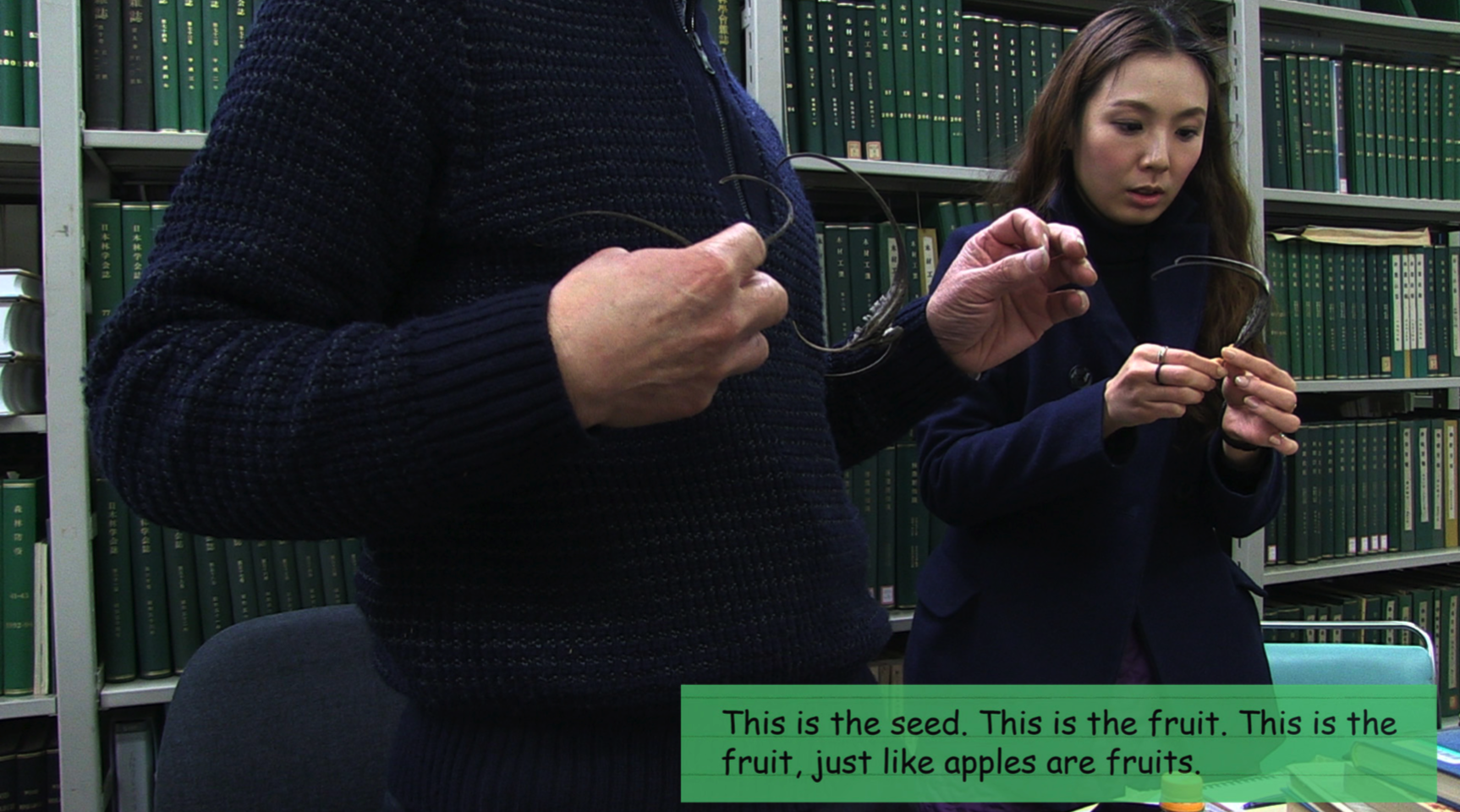 |
|
“Who was talking to my mother, when she was in the forest?” Video | 21′27″ | 2015 | Acknowledgement: Vitamin Creative Space |
"The Mother Earth and the Canary in the Coal Mine 1" and "The Mother Earth and the Canary in the Coal Mine 2" present the dialogue and related research with Li Anni, the artist, female teacher, and social activist in Singapore in the summer of 2016. She have used seeds and kitchen waste to grow plants in huge, tricky urban environments. Several Chinese restaurants around Li Anni’s home provide "organic" vegetables, but many fresh vegetable "scraps" are thrown into the street trash cans every day. She was so heartbroken and often collected fresh vegetables from the trash cans to eat by herself. One day in the spring of 2015, Anni suffered a stroke due to food poisoning and suffered a hemiplegia. It turned out that the neighbor not only threw away a lot of vegetables but also put rodenticide and insecticide in the alley. Regarding the waste of natural resources in today's capitalist society, Anni expressed strong criticism, thinking that the biggest thing that capitalism makes people lose is "respect for other lives." People have forgotten that they can only be obtained by giving.
 |
|
“Who was talking to my mother, when she was in the forest?” Video | 22′52″ | 2016 | Acknowledgement: Vitamin Creative Space |
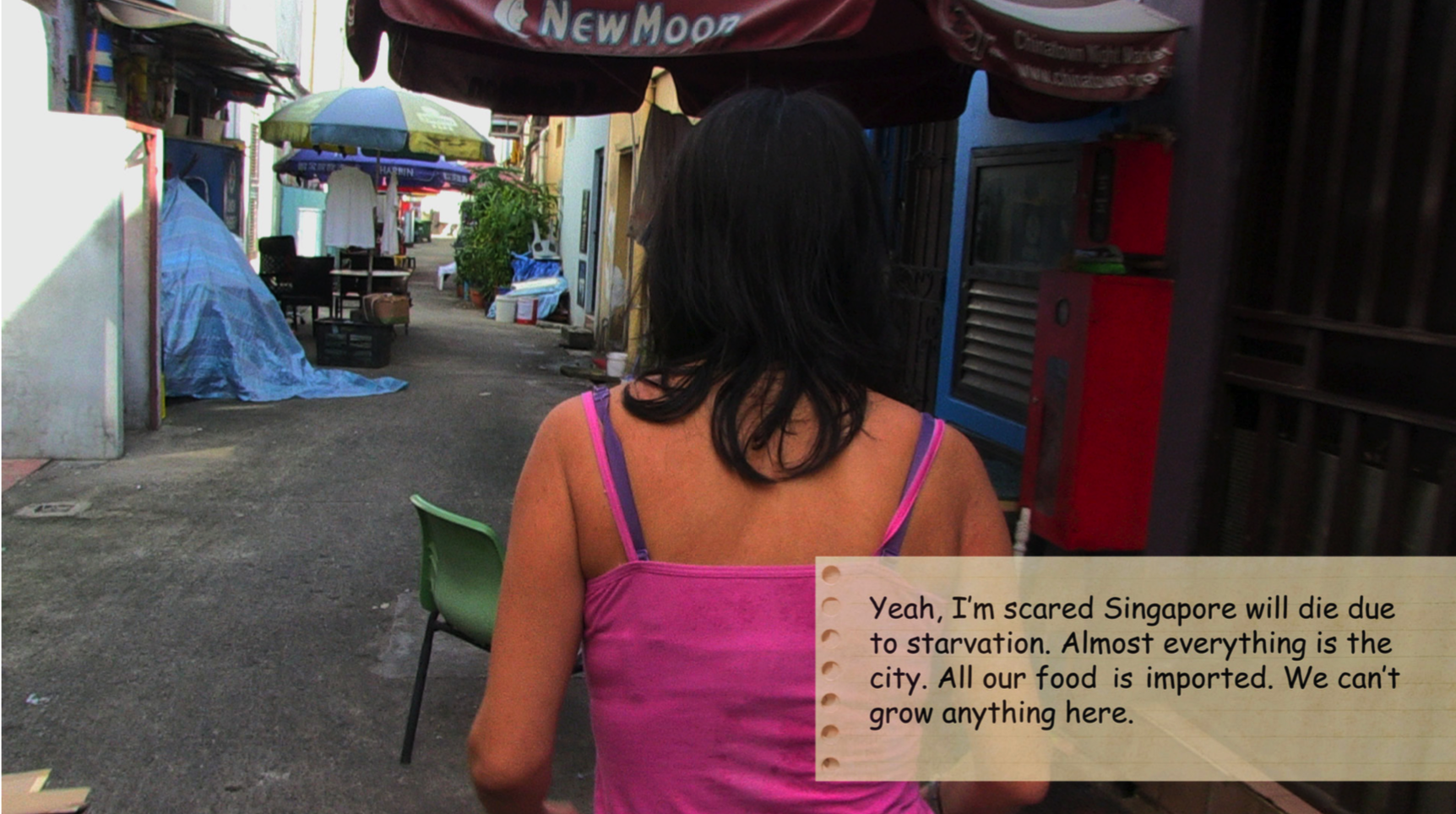 |
|
“Who was talking to my mother, when she was in the forest?” Video | 22′52″ | 2016 | Acknowledgement: Vitamin Creative Space |
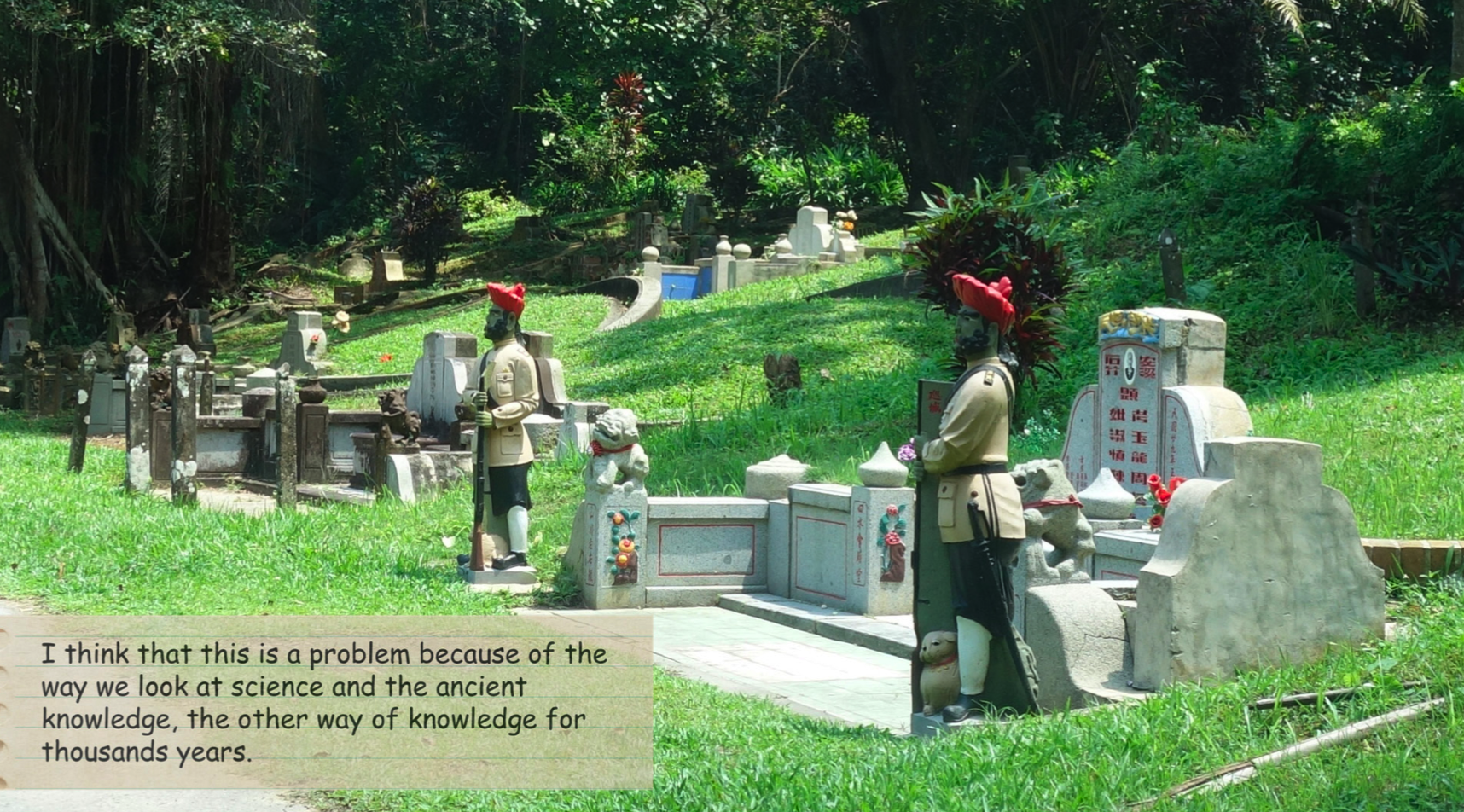 |
|
“Who was talking to my mother, when she was in the forest?” Video | 22′52″ | 2016 | Acknowledgement: Vitamin Creative Space |
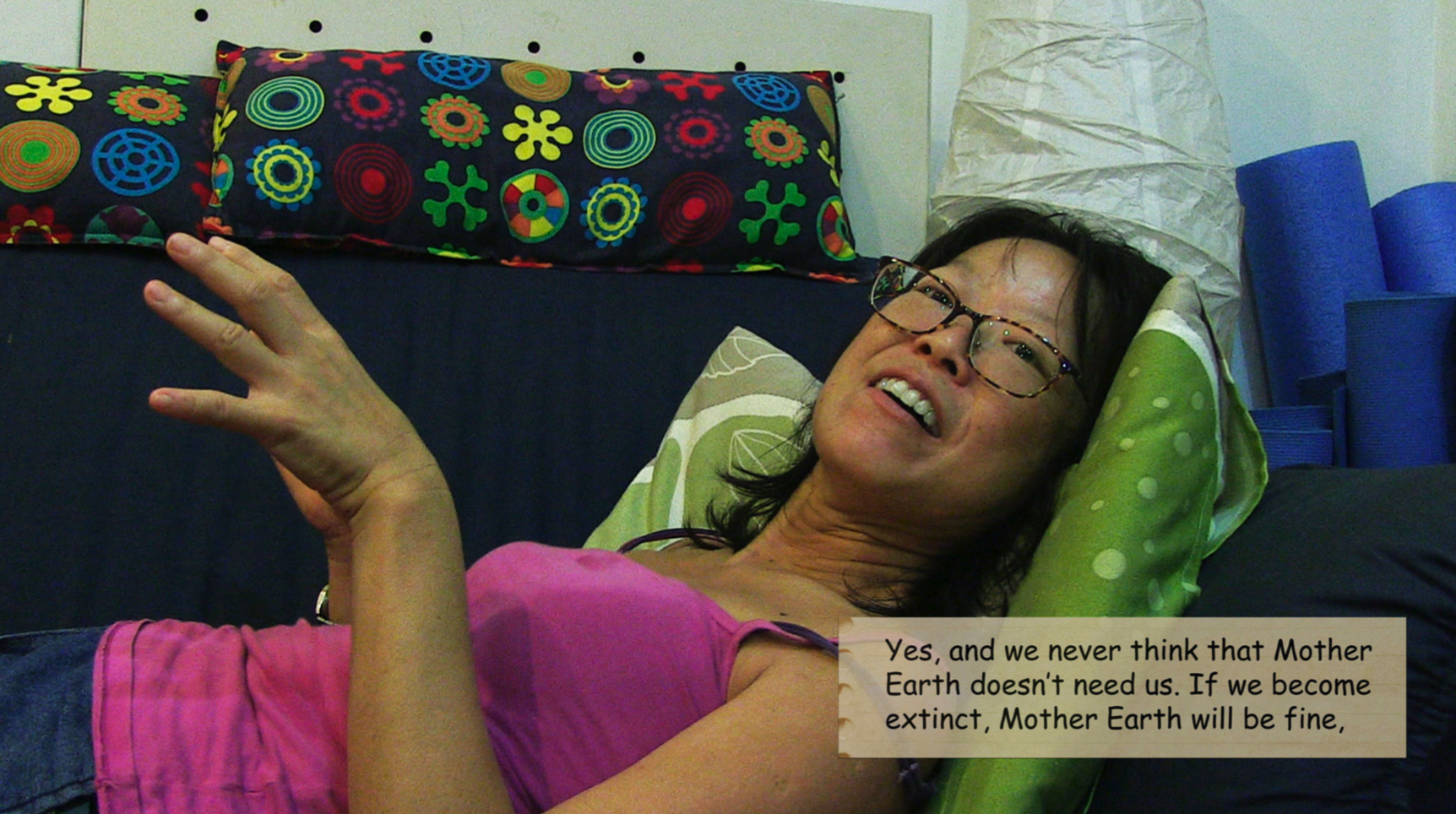 |
|
“Who was talking to my mother, when she was in the forest?” Video | 17′53″ | 2016 | Acknowledgement: Vitamin Creative Space |
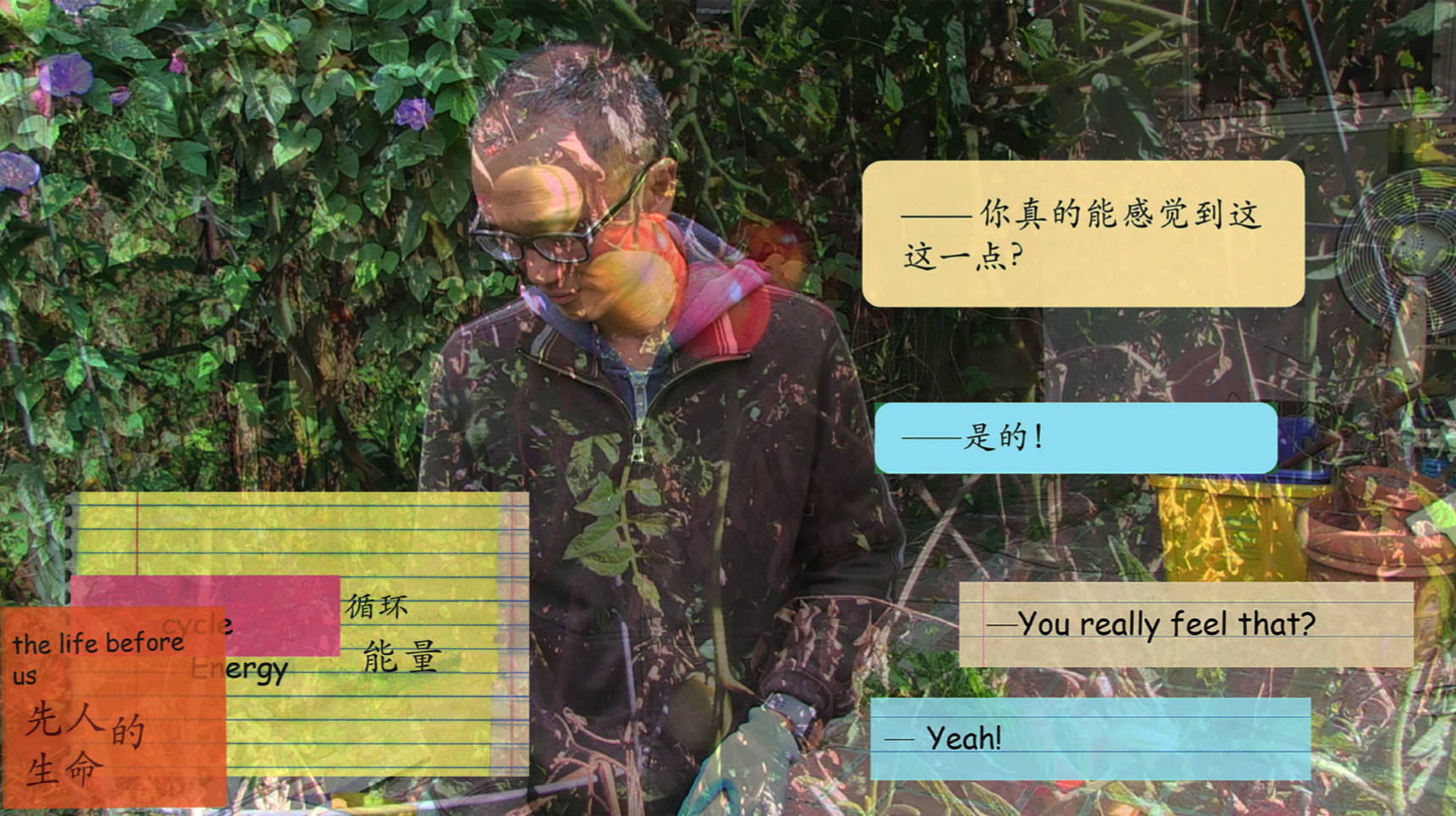 |
|
"Who was talking to my mother, when she was in the forest'' Video | 28′22″ | 2016 | Acknowledgement: Vitamin Creative Space |
"I Really Feel That Day 1" and "I Really Feel That Day 2" show the artist's conversation and related research with Chen Zhihao, the architect, community planner, and social movement leader during the artist's research in San Francisco from 2015 to 2016. Chen Zhihao grew up in an overseas Chinese family who immigrated from Taishan, Guangdong, China to the San Francisco Bay Area. Once, the Oakland City Council in the San Francisco Bay Area planned to demolish Madison Square Park. The park is located in the heart of the Chinese community, it is a place for morning exercises and gatherings of many generations of overseas Chinese and other groups. Zhihao believed that this park has accumulated the energy of overseas Chinese ancestors, and demolishing it means the dissipation of people and energy. So he organized a protest to save this park and successfully discouraged government officials and developers from the demolition plan at the end.
In the interview with the artist, Chen Zhihao mentioned that after his father passed away because he missed him, he began to grow vegetables and manage the vegetable garden. Through planting, he felt the cycle of life, the conversion of energy, and the endless bloodline, and felt that even though the older generation of Chinese left this world, the energy still exists. These feelings led him to the community rights movement.
On June 25, 2019, Xu Tan brought two video works and video playback equipment to the home of the Weng brothers in Daao Village, Shigou Town, Sihui County, Zhaoqing for a screening. He first came to the Weng brothers' house in 2013. After that, he conducted several surveys and continued to deepen the issues through long-term and continuous exchanges of conversation.
The "Solo Exhibition" series will continue to bring the phased results (they are also works) of the research to the site where the survey activities were originally carried out——mainly the homes of rural villagers and rural activities site, to simulate a new round of dialogue and research.
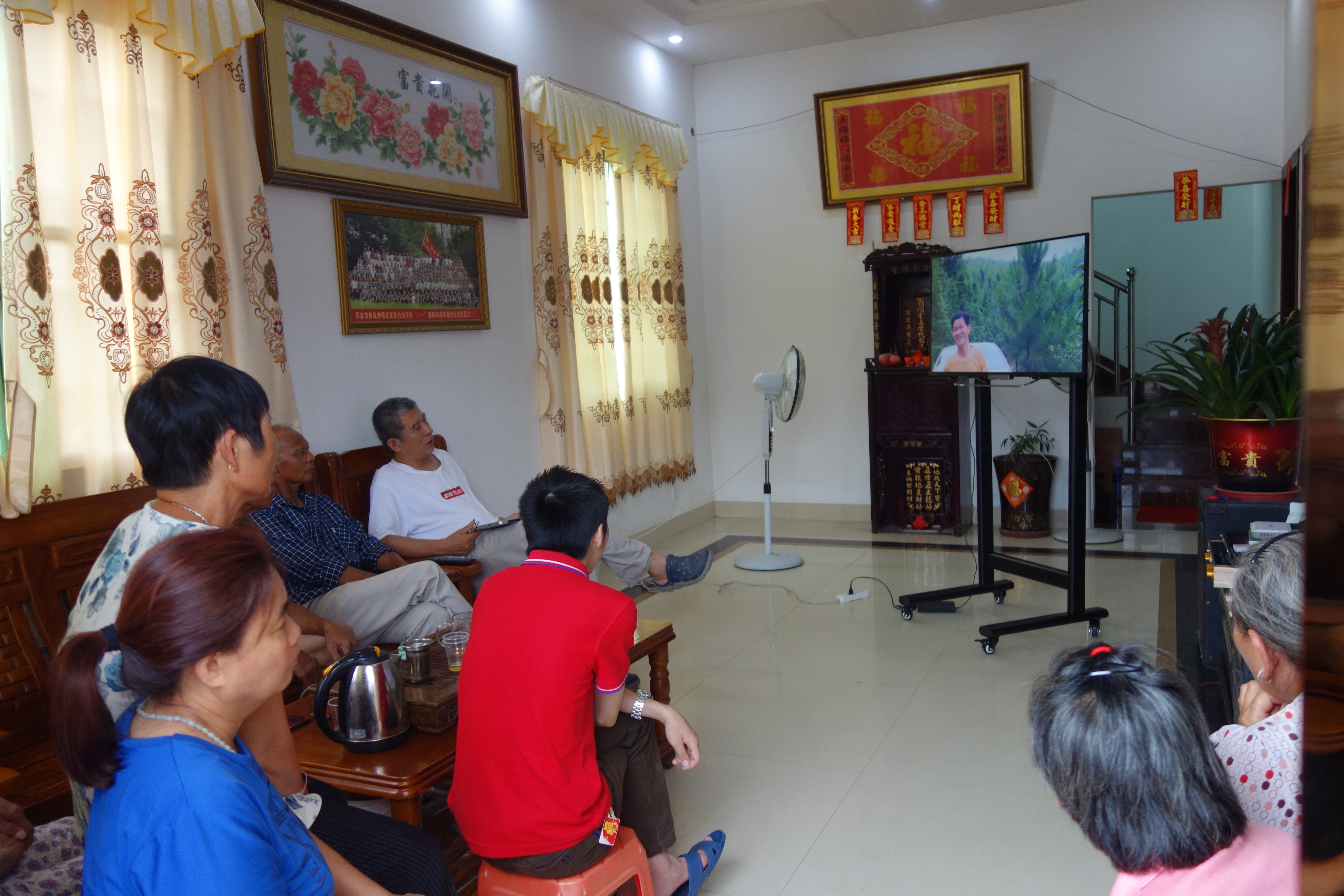 |
|
“Solo Exhibition” The family of Weng brothers in Daao Village, Shigou Town, Sihui County, Zhaoqing is a place where the artist has often returned to research since 2013. The picture shows the scene of the artist bringing the video back to the village for screening in June 2019. |
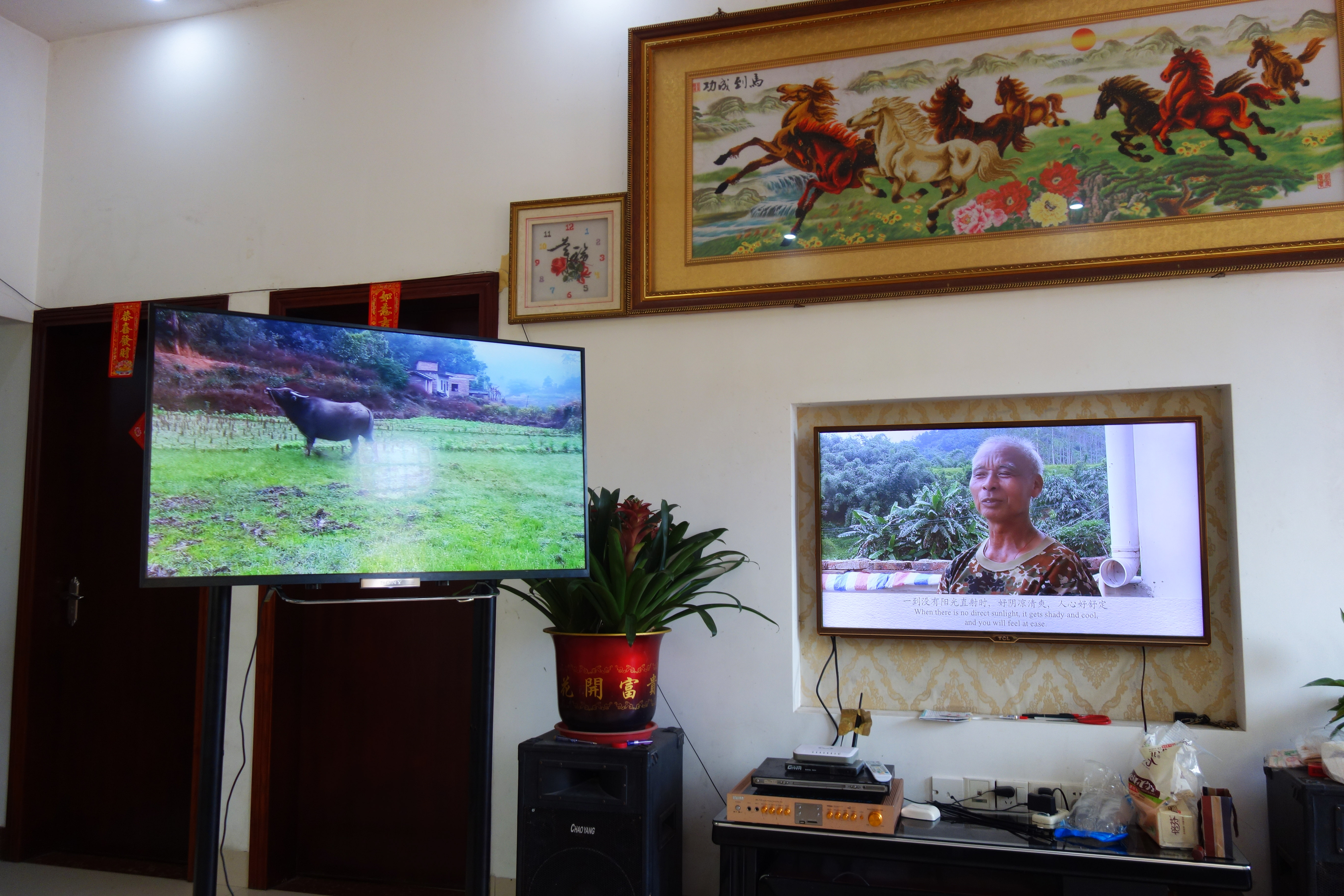 |
|
“Solo Exhibition” Exhibition site (Acknowledgement: Top Art Space) |
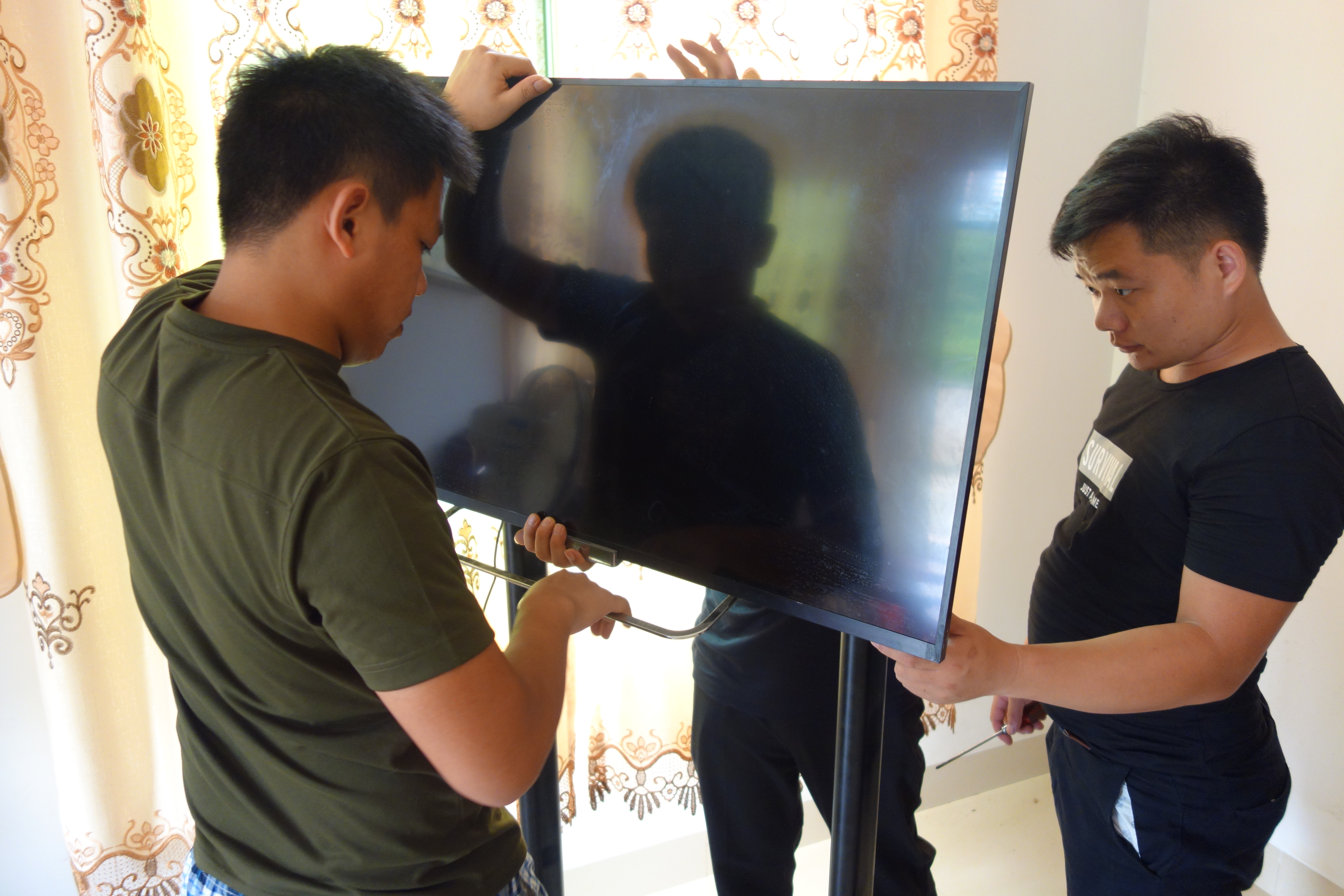 |
|
“Solo Exhibition” Setting up the exhibition (Acknowledgement: Top Art Space) |
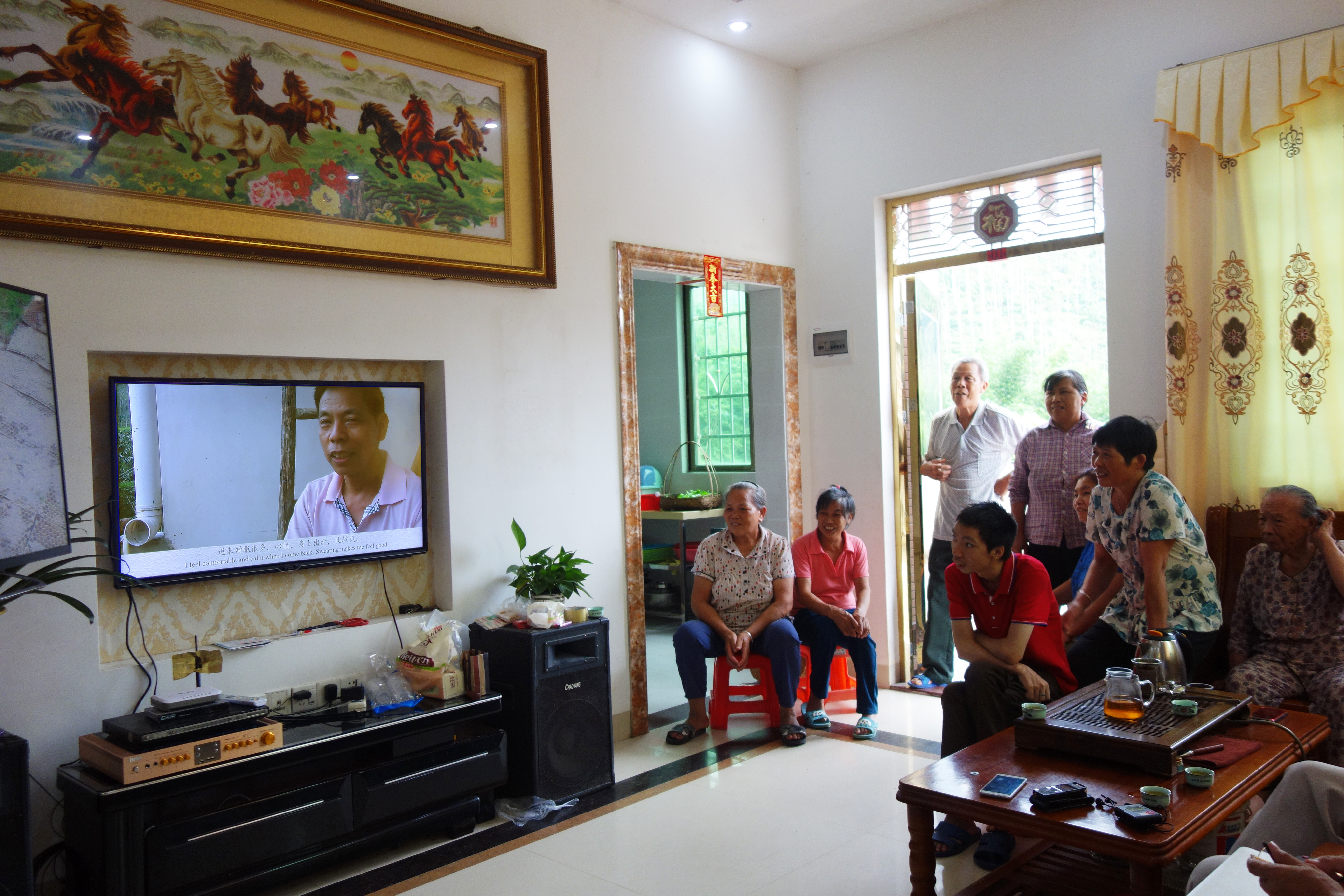 |
|
“Solo Exhibition” Exhibition site (Acknowledgement: Top Art Space) |
Image and video courtesy of the artist. All rights reserved.